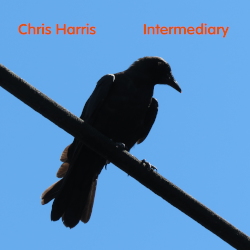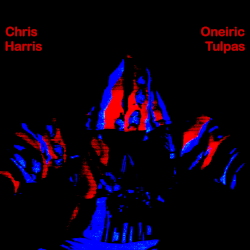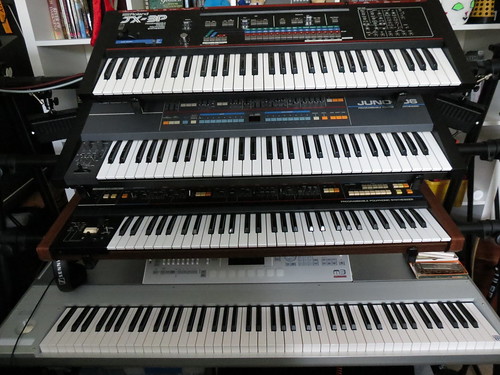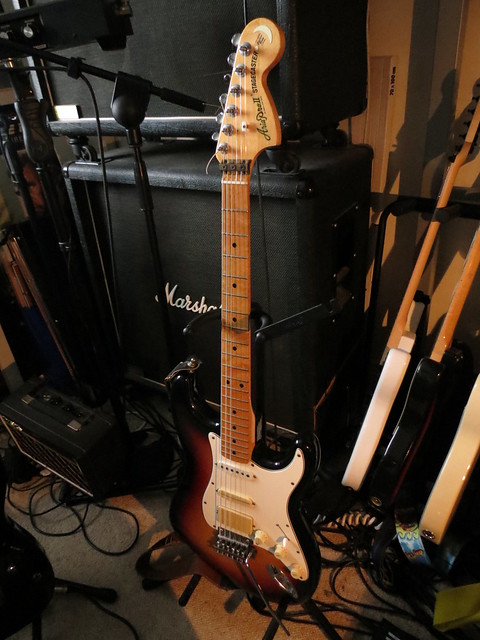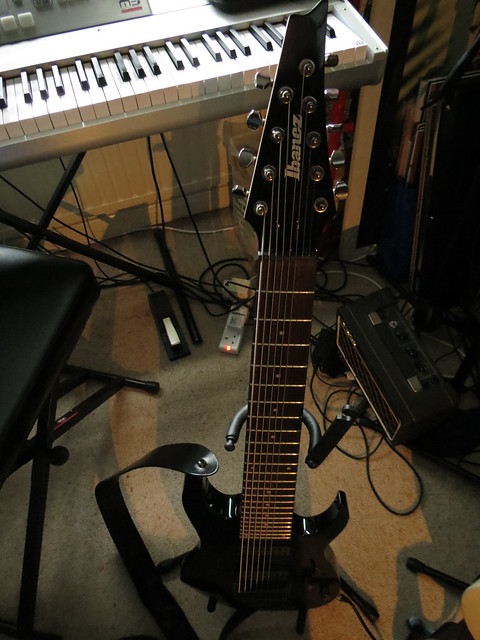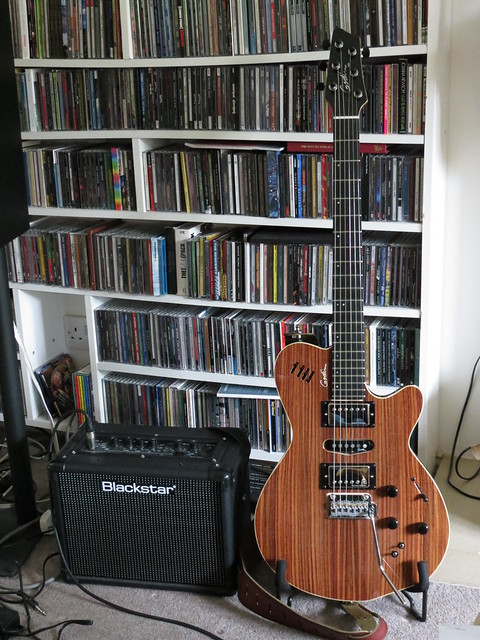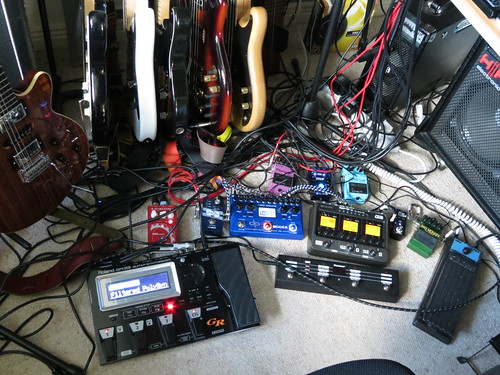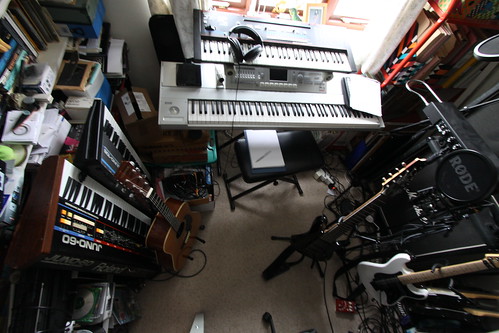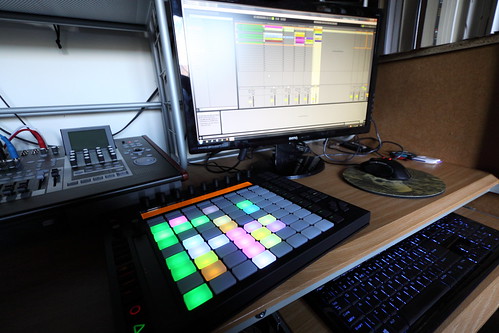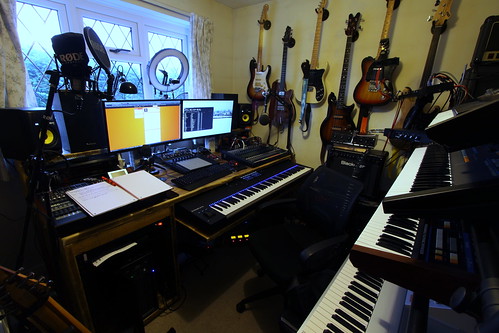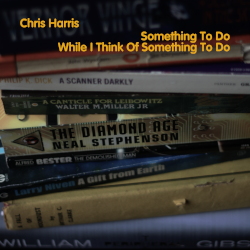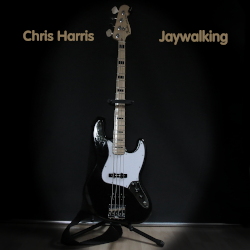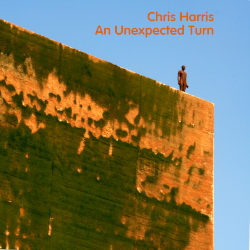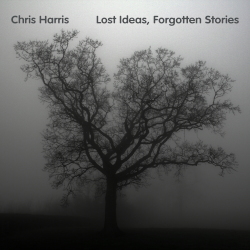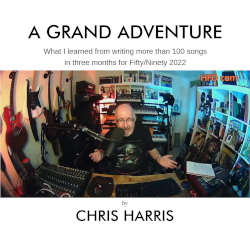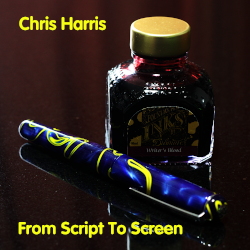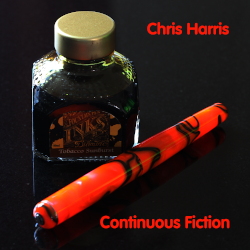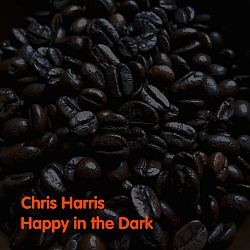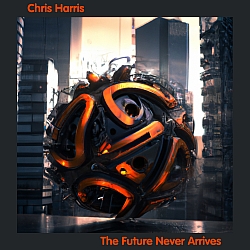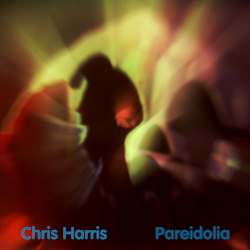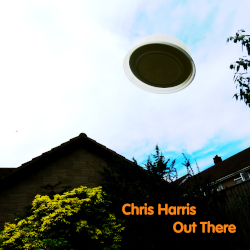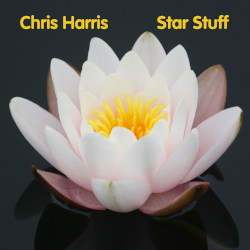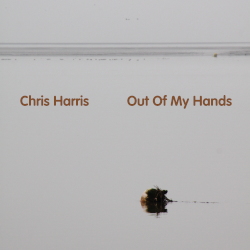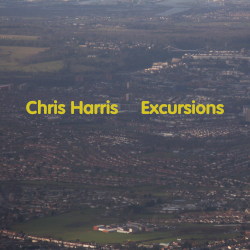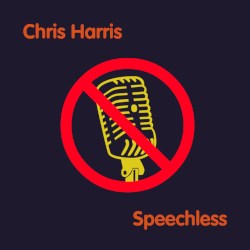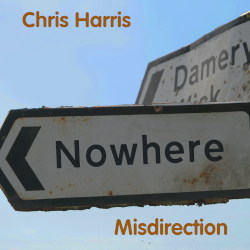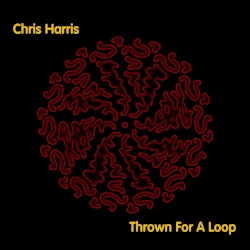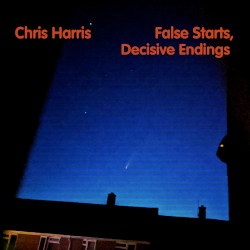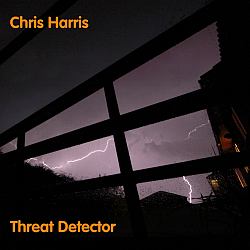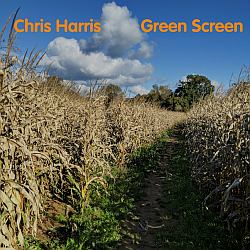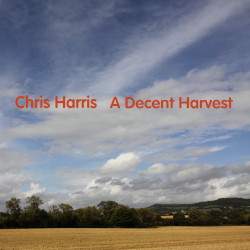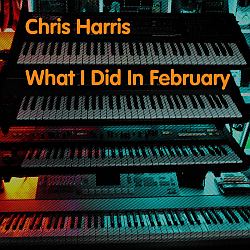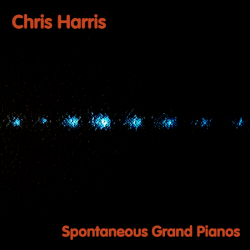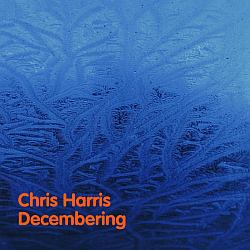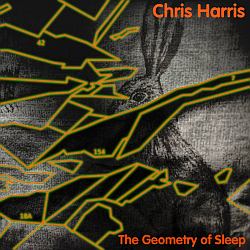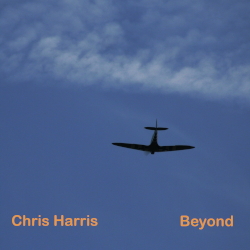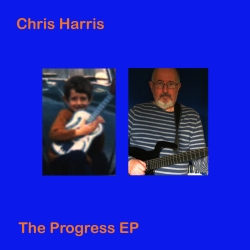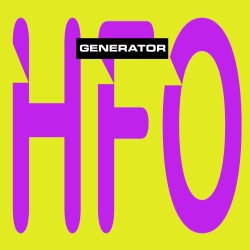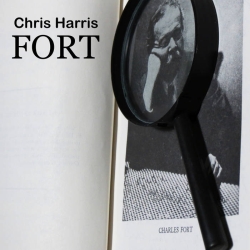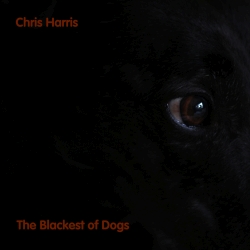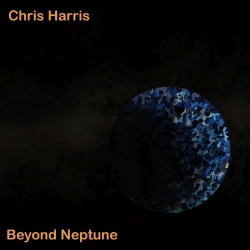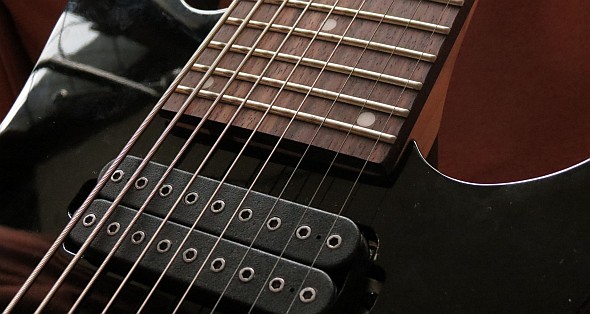
I've always been fascinated by music.
The first piece of music that I can remember hearing and deciding that I liked was an instrumental by a British band called the Tornados that was called Telstar. It was written and produced by studio wizard Joe Meek and a fine bit of trivia about the piece is that the guitarist who played on it was George Bellamy, father of Matt Bellamy, the singer and guitarist in Muse. As it was released in 1962, I'd have been just two years old when I first heard it; it seems that good music has always made a big impression on me.
Other memories of music from early childhood involved listening to my father playing tapes on his mono Ferrograph 2N reel-to-reel tape recorder when I was six or so. I can still remember the complex smell of that machine, a combination of bakelite, overheating electrical components, hot oil, and the musty, slightly sweet aroma of magnetic tape. He used to record a bizarre selection of music from classical concerts to comedy sketches by The Goons or Victor Borge. Luckily, I had some hip relatives too: my cousin Janet and her friends would discuss the latest releases by the Beatles and the Rolling Stones and listen to Radio Caroline in her car, and my cousin Peter was the first person I knew to own a Pink Floyd LP.
My first revelatory moment, however, was listening to Tubular Bells for the first time and discovering that Mike Oldfield had played everything on the album (as well as doing most of the singing). Being able to do that myself immediately became a cherished dream and a significant life goal.
And now I perform and record music of my own, like this:
When I was twelve my father finally upgraded his 1960s valve setup and bought a turntable: a Thorens TD160 hooked up to a Salora Hi Fi Stereo 3000 amplifier. At last, I finally had a reason to start buying LPs of my own. Unfortunately to start with I often had to content myself with reading the sleeve notes rather than actually listening to the music; I wasn't allowed to touch my father's turntable at all and, as a profoundly overbearing control freak, if he didn't like what he heard, he'd take it off the deck and hand it back to me with the words "I'm not listening to that rubbish."
Eventually I somehow managed to acquire a second-hand record player of my own. It was a portable model which had a carrying handle on the side, a black plastic covering, and a silver front with a folding, latched lid. It was, I think, made by Bush. I got a tremendous amount of use out of it and I've been listening to LPs ever since on turntables of increasing quality.
What was the first album I bought? It was Emerson Lake and Palmer's Pictures at an Exhibition, which I bought at W H Smith's in Stafford. Mike Oldfield's classic Tubular Bells followed almost immediately afterward—but as I was living in the Midlands and it was the 1970s, most of the albums I subsequently bought featured rock music in one form or another. Led Zeppelin, Black Sabbath, Yes and Pink Floyd were the bands at the top of the "albums to buy" list that I would obsessively rewrite every month or so as I discovered more records that I needed to add to my collection. I gradually became more and more focused on prog rock, and ever since then the genre has been my first choice for listening (and, these days, for playing). The blend of complexity, technical competence and big production values push all my muso buttons.
In case you're wondering: yes, I still have all my vinyl LPs, and I still listen to them. I have yet to investigate the delights of direct drive turntables, but I now have a belt drive Pro-Ject P2 that cost more than my first three record players combined, and it's been worth every penny. The process of putting a disc on the platter and brushing the dust off it is a ritual I will never tire of. It helps focus your attention on the music to come in a way that the trivial act of slotting a CD in a drive can never equal. Physically, too, the LP is such a glorious object. There's enough room on the sleeve to get a proper impression of the artwork rather than squinting at some tiny reproduction, and the gatefold sleeves for some double or treble albums have the size and heft befitting such extravagant musical endeavours. Hawkwind's albums were particularly impressive when unfolded, for instance. An LP wasn't just something to be listened to. It was a piece of art, something to treasure and cherish. Music is not something to be consumed; it's meant to be savoured, contemplated, and enjoyed. The packaging is an integral part of that experience. CDs just aren't the same, and as for downloads? Don't get me started.
But...
Having said all that, I remember being astonished by the absence of surface noise and the huge increase in dynamic range when I first listened to a CD. It was a recording of an album I thought I knew intimately: the fourth solo album by Peter Gabriel. Even though this was back at the beginning of the 1980s, I can still remember my single-word reaction when that immense bass note at the beginning of "The Rhythm of the Heat" came out of the speakers:
"Oh..."
As soon as I discovered what a compact disc sounded like, I started saving up to buy a player. I bought my first CD player back in early 1982. It was part of a gold Marantz system, the type that were known as midi systems even though they had nothing to do with the Musical Instrument Digital Interface system that we know and love today (it actually referred to the form factor of each unit). My Marantz system consisted of a stack of units that clipped together, one on top of another. A set of edge connectors at the rear top and bottom of each module kept cabling to a minimum and also reduced the risk of the stack getting knocked over. To my ears, it sounded great. As well as the CD54 compact disc player, it featured an AM/FM tuner, a cassette deck, an amplifier, and a turntable which rested somewhat precariously on the top for playing my LPs. While the other components were all pressed into service immediately, it was actually several months before I could afford to buy a compact disc to play on it. CDs back then were far more expensive than they are now. The asking price was somewhere north of £15 and it didn't drop for years. No wonder the 1980s were such a time of excesses in the music industry, because they must have been raking in the money.
The first two CDs I bought were The Turn of a Friendly Card by the Alan Parsons Project and The Golden Age of Wireless by Thomas Dolby. I wasn't exactly an early adopter, though. For the most part I continued to buy my music on vinyl and my CD collection remained in single figures for about a year. The fact that I could buy two or three vinyl LPs for the price of one CD meant that picking the digital version of a release was a pretty major deal. The process by which I decided which albums were worth buying on CD involved considerable research and the assessment of a bewildering and convoluted array of arcane criteria that I'd come up with; purchases depended not only who the artist was and how familiar I was with their work, but also on things like what sort of musical instruments were being played (and how loudly) and also on the technology which had been used to record—and mix—the album. In the 80s, CD sleeves had a three-letter code on them called the SPARS code, which indicated whether the methods used to record, mix, and master the album were analogue (denoted by an "A") or digital (denoted by a "D"). I had rapidly decided that the must-have CDs, in terms of sonic clarity, were the ones with a SPARS code of DDD. These days, of course, things aren't quite so clear cut, as I've heard tales from folk in the industry that more than one reissue of a classic album that was allegedly DDD in fact being "mastered" not from the original studio tapes, but from an audio recording of someone playing a vinyl LP of the original release...
Most record shops didn't sell CDs at first; I can remember spending many lunchtimes in the record shop over the road from where I worked in Cheapside in London (which I think was called Harlequin Records), as they had one of the largest selections I knew about. Their stock probably ran to five or six hundred different titles, which sounds a paltry amount in these days of online retailers but back then, it was the sonic equivalent of Aladdin's cave. I spent a fair proportion of my salary in there in the 1980s before I moved to Milton Keynes and bought a house. There, the main music retailer was Sam Goody's, whose prices curtailed the rate at which I bought new discs even more effectively than my newly-acquired mortgage.
As their prices came down, though, CDs gradually became my de facto medium for buying music. Even so, it took another seven or eight years for my vinyl habit to completely die off. That was when the Internet happened, online music retailers like play.com appeared, and the price of CDs dropped through the floor. It's fairly safe to say that I went nuts; my album collection ballooned and rapidly threatened to take over the living room. CDs are still my preferred medium for buying music. Why? Because if a streaming service goes bust, so does your music collection.
The CD player on my Marantz system finally wore out and stopped working after nearly twenty years of heavy use. I was distraught; I had listened to thousands of hours of music with it. The rest of the system eventually followed suit but even though it was dead, I just couldn't bring myself to get rid of it. It's still languishing at the back of the loft somewhere and at some point I intend to find someone who knows what they're doing and can replace all its capacitors (which are almost certainly the elements that have failed) and return it to working order.
But the bright side of its loss was that it forced me to take the plunge and move to a proper, "separates" system. My timing was perfect: the Digital Versatile Disc format had just hit the market, so I chose a disc player that could play DVDs as well as CDs. After much consideration and interminable research, I bought a Denon surround sound amp (which I still have; it's currently plugged into my bedroom studio) and hooked everything up to my television. That began my tumble down the rabbit hole of home cinema technology and you can read all about that particular obsession of mine elsewhere on this site.
The first DVD player that I bought was a Panasonic. Not only could it play DVDs no matter which regional encoding was on them, it could also deal with more esoteric formats. As well as playing plain CDs on it, I explored the SACD format for a while. I liked the idea of surround sound mixes, but I soon decided that I could live without replacing the albums I already owned (with one or two notable exceptions like Pink Floyd's The Dark Side of the Moon. SACDs weren't cheap. Releases of the sort of albums that I was interested in were few and far between, too—to date, I have a grand total of just four albums in the format. It's probably just as well that SACD was a format that I chose not to adopt and these days it's been superseded by Atmos mixes on BluRay (that are much easier to find, too).
It was the same lack of availability that led me to make the decision not to bother with DVD-A discs. As they could be played on most standard DVD players, they became more popular than SACDs and there was a somewhat wider selection of titles available, but I can count the number of releases I have on the fingers of one hand. Most of the DVD-A disks I bought as standalone releases (rather than being part of box sets or commemorative reissues) were recorded by Donald Fagen. Tracking his snapping fingers as they circle round the room at the beginning of the DVD-A release of Kamakiriad is a great piece of music to check that your surround system is working properly (and it's fun to use it to demonstrate to your friends what the experience of listening to music in surround sound is like).
After being exposed to very loud music over the last forty years or so, perhaps it's no surprise that it's the multi-channel aspect of digital audio that appeals to me more than the increased definition of the recording. But even with my ears, I can hear a difference in what I'm listening to on a DVD-A or a Blu-Ray disc. There's more definition. And to explain what that means, please excuse me if I get technical for a paragraph or two...
The sound on a CD is played from a recording that was "sampled" 44,100 times every second, or 44.1 kHz. The sampling rate governs the frequency response of the recorded signal. Any audio which has a frequency of less than half the sampling rate (a frequency known as the Nyquist frequency) can be reproduced without distortion (known in the audio world as aliasing). The Nyquist frequency of a CD recording is, therefore, 22.05 kHz. This is above the highest frequency that the average adult human can hear. Indeed, the specific sample rate used was chosen in order to take that very fact into account. However, many audio interfaces used in recording studios can sample at much higher rates than this; even your computer's humble sound card is likely to be capable of running at 48 kHz at least, and it's not uncommon to find ones that run at 96 kHz or even 192 kHz. The MOTU M4 audio interface that I use in my studio these days can sample audio at 44.1, 48, 88.2, 96, 176.4, or even 192 kHz.
Audio that is sampled digitally does not have a continuously varying range
of values like the signal on an analog LP does, though. Instead, it's
quantised into a number of discrete steps (and this is the basis for vinyl
aficionados claiming that the LP is a superior format to the CD). On a CD,
the audio is stored as 16-bit data, meaning that the value of the
amplitude of each sample is stored as a binary word that is 16
binary digits (bits) long. And that means that the range of values
for each sample runs in binary from 0000000000000000 (which is
0 in decimal) to 1111111111111111 (which is 216,
or 65,536 in decimal).
That's a big range of values, but it's not massive. Again, there's a lot of technology around that is used for recording audio at bit depths of 24 or even 32, which give a range of values of 224 or 16,777,216 and 232 or 4,294,967,296 respectively.
The MOTU M4 that I use as my audio interface these days has a 32-bit/192 kHz ESS Sabre32 DAC chip in it. That's quite an improvement in resolution over what is required for achieving CD quality recordings. Understandably, the audio files you get when you record at that resolution are significantly larger, which is why the Blu-Ray format is better suited to high definition audio releases than CDs are. Where a CD holds around 700 Mb, a dual-layer Blu-Ray disc can store 50 Gb of data. All that extra data pays off: for every bit you add to the binary word storing a sample, you get a 6 dB increase in the dynamic range of the signal that's being recorded. That's a lot.
The dynamic range of a playback system is always split into two parts:
- Its signal to noise ratio, which indicates how much louder the recorded signal is when it's compared to the background noise that is generated by the system itself—remember that I mentioned an LP's surface noise when I talked about that Peter Gabriel album just now?
- Its headroom, or how much louder the signal can get above a nominal value (on CDs this is defined as -14 Loudness Units Full Scale or LUFS) before it starts distorting, or clipping.
The dynamic range of a vinyl record comes in at around 70 dB, and a CD has a maximum theoretical dynamic range of 96 dB. That sounded pretty darn good to me when I first heard a CD, and it still is. That's as good as anyone really needs, right?
Well, up until the point where I heard a DVD-A disc, I'd probably have agreed with you. Afterwards, not so much: the maximum theoretical dynamic range of a DVD-A disc is 144 dB. Believe me, that makes an absolutely jaw-dropping difference.
The highest-quality commercial recordings I own are on Blu-Ray. The Atmos mix on my 50th Anniversary copy of Dark Side Of The Moon is mastered at 96 kHz/24-bit but it also has a DTS-HD stereo mix that's 192 kHz/24-bit. Other high definition recordings in my collection include several King Crimson albums and a remastered version of Rush's Moving Pictures. The Crimson box sets are glorious things, each containing on the order of twenty discs which address a two- or three-year phase of the band's fifty-year recording career. Each set addresses two or three albums and does so in prodigious detail. The albums are presented in multiple formats which include surround sound mixes together with studio outtakes, videos of live performances, and much more besides. I must admit I get a kick out of seeing my surround sound amp telling me that it's reproducing audio at 96 kHz, with 24-bit encoding.
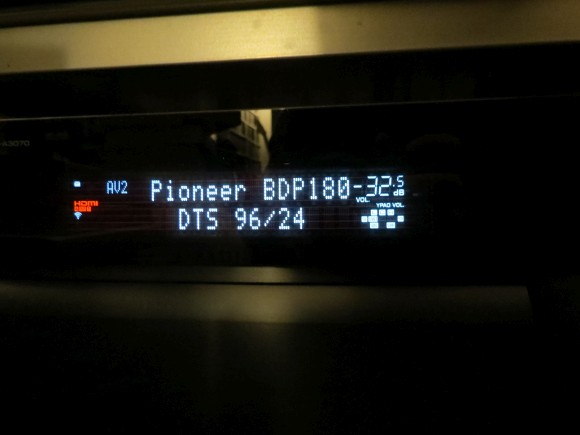
And yes, I can hear the difference, even with my rather elderly and well-used ears. The recordings are more finely detailed and the increased signal to noise ratio and greater headroom is readily apparent. Which is odd, because the human ear shouldn't be able to tell that there is anything missing from the audio as it's presented on a CD. Our ears can't hear frequencies above 20 kHz, well below a CD's Nyquist frequency. But psychoacoustics is a strange thing, and a recent meta-analysis by Joshua Reiss found that people really can tell the difference.
However, "hearing a difference" is most emphatically not the same as "hearing an improvement". Audio amplifiers distort more readily when they're fed signals they're not designed to reproduce such as ultrasonics, and as this blog points out in detail, music that's encoded at higher frequencies allows much more of those nasty, distortion-making signals to wreak havoc with your amplifier. Even the increased dynamic range is, in most cases, pure overkill and completely unnecessary. The verdict in the blog is that those 24-bit/192kHz recordings sound worse than CDs, and each file takes up six times the space.
So as things stand, I'm not ready to move away from the CD format. For one thing, I've invested heavily in the format, with a collection of well over 2000 discs. For another, I'm not a fan of digital file compression when it's applied to music. I find low bitrate mp3 files ugly and painful to listen to, particularly if there are cymbals in the mix—high frequencies don't survive lossy file compression in any shape or form that's easy on the ears. The results are nasty. I don't really do the downloads thing unless there is absolutely no other way of getting the particular piece of music I'm looking for, or I can get a CD of the same album at the same time.
I like to hear the music I'm listening to properly, but I wouldn't class myself as an audiophile. I don't keep swapping out components in the quest for that perfect sound—far from it: I refresh my audio system once every twenty years or so. When I do decide it's time to upgrade, it's usually because something breaks. I'm not keen on adopting new formats when they're introduced; it took me fourteen years to buy an amp that could decode DTS Master Audio data, for example. When I do buy stuff, I buy equipment that's going to last. The key to any system is the speakers, and way back at the turn of the century I spent a long time going round lots of different audio stores, auditioning different brands connected to amps in all shapes and sizes before I picked the setup that I've got now: a pair of B&W DM 602 series 2s for the left and right channels, 601s for the surround channels, a CC6 for the centre, and a Paradigm PDR10 for the sub. Twenty years later, the resulting sound is still excellent, even if I've had to replace the driver in the subwoofer after the polyurethane foam gaiter connecting the original speaker cone to its chassis rotted away into a nasty black goo; audio equipment does not last forever. I was able to pick up a replacement driver (with a significantly better specification than the original) for under £40 and managed to install it in the cabinet myself without any difficulty at all. Once it had bedded in (new loudspeakers take time to settle down) the degree to which it beefed up the low end of my system was astonishing. I needed that extra grunt, too; the surround sound amp that I use for listening to music and watching movies can handle all the current audio formats including Dolby Atmos, which is a true three-dimensional sound recording format. So far I've resisted the temptation to install extra speakers in the ceiling to take full advantage of the format's capabilities.
As I said in the introduction to this page, I was never allowed to go to gigs as a kid. My parents may have meant well, but they were both obsessively overprotective and my father in particular wanted to control everything I did. Nor did he have any interest in spending money on luxury items like concert tickets, particularly if they were for someone else; he couldn't see the point, and understanding that someone else might like to go to such events was a leap too far for him. And so all my schoolmates were off having the time of their lives seeing bands like Led Zeppelin, Pink Floyd, Queen, Yes, and the like in the heydays of the 1970s, and I wasn't. When I finally got old enough to go and see the bands that I had wanted to see back then, many of them had stopped touring or had split up. If I'm being honest, I still bitterly resent that fact. I've been overcompensating for it ever since.
By the time I was eighteen, my father could no longer claim that I wasn't old enough to be allowed to go out on my own and I finally got to go to gigs. I'd go and see anything I could; early concerts ranged from blues legends The Pirates, who were supported by Blast Furnace and the Heatwaves (a side project of music journalist Charles Shaar Murray), prog legends Rush on their Tour of the Hemispheres, supported by Wild Horses, and Devo, supported by The Members (which was the first concert I ever went to at the Hammersmith Odeon; the ticket cost me £4.50.) In my twenties, I'd go to at least one gig a month, sometimes more than one. If any of favourite bands played London, I'd try to go on every date they played (when Rush played Hammersmith for five nights in a row, I'm pretty sure that I went to at least three nights). I started noticing things like stagecraft, and judged bands by how much they mixed up the set list from one night to the next. I learned the magic and power of spontaneity very early on. At this point, I guess I was already thinking about how I'd go about playing live...
A good live gig always makes me feel like I'm a teenager again. The buzz I get from a big concert is enough to keep me going for a month or two. The only concession to any sort of maturity is that I wear earplugs these days. I started doing this after catching Motörhead's Bomber Tour at London's Hammersmith Odeon. It was so loud that when Philthy used his kick drums it felt like I was being physically punched in the chest. It certainly got the adrenaline flowing, but my ears rang for nearly a week afterwards and I decided that subjecting myself to sound pressure levels that high on a regular basis probably wasn't a good idea in the long term. My hearing isn't so great these days if there's a lot of background noise, but it's a darn sight better than it would be if I hadn't started using earplugs. Look after your hearing, kids; you only get one pair of ears.
I still go to gigs, because there are few finer things in life than seeing and hearing a good band totally nailing it on stage. Although you'll still see me right down at the front for my favourite artists (I was in the front of the pit when I saw Devin Townsend at the Royal Albert Hall in 2022, for example) I do find myself appreciating seated venues more than I used to. But whether I've been standing or seated, my blog will usually have a report when I've been to a particularly memorable show.
My first experience of performing on stage happened in primary school, when I was assigned the lead in the school play. Looking back on things now, I'm pretty sure that the role wasn't assigned on merit; it was an effort by my teachers to boost my self-confidence, as I'd just spent three months in and out of hospital after surgery for a massive kidney stone. And that is a theme that will recur on this page...
As soon as my friends hit their teens, they started forming bands. I wasn't involved in any of this, because I'd been learning piano. You can't exactly wheel an upright piano round to your mate's house for a jam (I remember one pal actually wheeled his Vox AC-30 round to my home in a wheelbarrow so that a bunch of us could play together, but it was way too ridiculous a thing to ever do more than once). Not being able to join in back then has been a source of profound regret for most of my adult life and it's probably why I am quite as obsessed with being a one-man band as I am today: it's all about compensating for being rejected, folks. Clearly, I still have issues about spending childhood as an outcast.
It wasn't until I was in my twenties when I discovered synthesizers and my friends heard me play that I started being asked to fill in for their regular keyboardist at gigs; suddenly, my outsider status evaporated. I had become useful!
So those piano lessons eventually paid off, and I'd have to say that I'm always going to be most proficient as a keyboard player. At most of the gigs I've played, I've been behind a rack of synths. The largest venue I've played? Probably Hemel Hempstead Pavilion in front of a couple of hundred people. Here I am at The Square in Harlow in 1987. That's me on the left in the er, very red trousers. Hey, it was the 80's, okay? We dressed like that back then.
"Don't bother looking for it, it's not there any more."
Marty di Bergi, This Is Spinal Tap
Sadly, both the Pavilion and The Square have since been demolished. I'm not going to make any observation about possible links with my musical career. Other venues can breathe relatively easily; in the years since then, I can count the live performances I've made on the fingers of one hand. I have jammed with friends in an informal setting from time to time, usually during birthday parties, although even then I'm always spectacularly anxious before I get up on stage—which is odd, because once I'm out there and playing something, I have a great time.
The thing about playing music is that you're so involved at the time it's difficult to get an unbiased impression of how well you're doing. One of the most important ways to improve your playing is by listening to it afterwards, and if you decide you need to be able to do that, sooner or later you're going to want to start recording what you do. Dear reader, beware. It is a long and tortuous path on which you are considering setting foot.
Since I started playing music when I was a kid, I've seen a massive change in the technology available for amateur duffers like me to record their performances. If you're anything like me, once you've started recording what you play, you will also get to the point where you start thinking about composing some music of your own. Once that ambition kicks in, you start looking for ways to put together demo tapes of your material, and off down the rabbit hole we go...
When I was still at school, I somehow managed to pester my parents into helping me to buy a Decca Legato mono cassette recorder. My cousins had one, and I loved the thing, because not only was it a new way to consume audio (I used the microphone that came with mine to tape songs I liked off the radio or from the television), it also allowed me to create my own. It was rapidly pressed into to service to record me playing the piano or—together with my friends—recreate episodes of the Goon Show from my book of the scripts. All I had was the cheapest dynamic microphone imaginable and a few of my mother's pots and pans for the sound effects, but it was enough to let us have serious amounts of fun. A few years ago I caught up with an old mate from those days (hi Paul) and those early recording sessions were one of the first things that we reminisced about!
When I started playing in bands in the 80s I'd bring along a small Philips ghetto blaster to practice sessions so I could record our rehearsals and learn each song properly; the Philips had a built-in stereo microphone that turned out to work really well for taping a live band. Being able to play back what we'd done taught me a valuable lesson: it showed me just how powerful a tape recorder can be as a tool for performance improvement.
At about the same time, my musician friends had started buying four-track portastudios and writing their own material. I was asked to help out with their recording sessions—usually by playing keyboards—and as a result I got bitten by the home recording bug too, although I couldn't afford a multi-track recorder of my own. I had to be content with appearing as a guest artist on my friends' tapes. A few years later I was able to acquire a second-hand four-track recorder. It was about as basic as it gets, a Fostex X-15, but it was enough to allow me to conduct the first recording sessions of my very own. As soon as I did so, I was utterly hooked.
The X-15 wasn't the most sophisticated of units (it lacked even the most basic of noise reduction circuits, and the level meters on it really sucked) and as it had been well-used even before I started using it (that, after all, was why I could afford it), it didn't exactly provide much by way of full frequency recordings. Nevertheless, it served me well for more than a decade, allowing me to record incidental music for video projects at work as well as supporting occasional forays into overdubbed guitar pieces for my own amusement. At that time I was recently divorced and my self-esteem was so low—and I was so unsure of my own abilities as a guitarist—that I certainly wasn't about to play them for anybody else. That, too has changed, and the growth of my self-confidence and self-esteem has been one of the most pleasant side-effects of my musical adventures.
By the early part of this century, I realised that I was becoming much more serious about recording music at home. A friend of mine told me about an online challenge by the name of February Album Writing Month, known to one and all as FAWM. The challenge is to write an album's worth of songs—fourteen of them—in the 28 days of February. I signed up, but I didn't do much for the first couple of years. Partly it was a lack of confidence, but mostly it was because the Fostex had become so knackered that it could no longer support my burgeoning musical ambitions. It wasn't just the fact that the recording quality I got out of it had deteriorated so badly that it had become unusable; after a couple of years of taking part in FAWM, four tracks were just no longer enough to put my increasingly grandiose ideas into practice.
I had been seriously bitten by the home recording bug. I wanted my recordings to sound more like the versions I'd imagined that I was going to make and a worn out four-track cassette recorder just didn't cut the mustard. And so, after the traditional months of research reading home recording magazines and much hemming and hawing, I finally took the plunge and upgraded my recording facilities with a digital recorder. When it comes to music these days, I don't do things by halves so I went straight from four analog tracks on cassette tape to thirty-two digital tracks on a hard disc drive: I bought myself a Korg D3200. As you can imagine, that was a heck of a leap from the X-15. When I bought it, the Korg was very much my dream machine, because it had an amazing number of tracks to play with, and they were all recorded onto a 40 Gb drive inside the machine (meaning that I no longer had to keep buying packs of fresh cassettes every six months or so). With thirty-two tracks at my disposal, I could more or less forget about needing to bounce down tracks in order to free up space for further takes.
The D3200 is also capable of recording up to 12 channels simultaneously and unless I suddenly join a band again and we take the show out on the road, that is way, way more than I'll ever need. It has a built-in set of effects that outclassed the grungy assortment of pedals I'd acquired up until then. In fact, the Korg made most of my older gear look dated: it has a four-band equalizer on every track, and there are more than 100 insert effects available (including a handful of amp simulators, some very nice reverbs and delays, and a set of more-than-adequate compressors, expanders, and limiters), all of which can be used on individual tracks or assigned to the master tracks. I'd never had access to things like that before, and I was blown away by how much of an improvement they made to the results I was getting. Even now, I'm still very impressed by how easy the D3200 is to use, and it rapidly transformed the music that I was producing; for a start, it no longer sounded like I'd been recorded through a pile of old socks...
Taking part in FAWM kick-started my songwriting career. I became obsessed with it. It wasn't long before I had also signed up for the songwriting challenge of 50/90, where you are challenged to write fifty songs in the ninety days between July 4th and October 1st. I've taken part in both challenges every year since 2013 and since I signed up I've written and recorded more than a thousand pieces of music. In the decade before I started doing FAWM, my output consisted of just three short instrumental tracks, and they weren't that great. Trust me on this: becoming a FAWMer will work wonders for your songwriting in terms of both quantity and quality.
When I bought the D3200 it was a step-change from the cassette multitrack recorders that had been the staple platform of the home recording industry since the 1980s. I didn't know it at the time, but the next revolution in home recording was already under way. A number of manufacturers introduced affordable and efficient Digital Audio Workstation (DAW) software around the turn of the century (yes, I know Cubase has been around since 1983, but as I see it, the field only started to gain momentum when Ableton Live appeared on the scene in 2001; this was followed by Apple deciding to bundle their GarageBand DAW with every new machine in 2004). By 2010 or so, the home recording crowd had really started to embrace DAW software, and I eventually followed suit. I began experimenting with copying the audio files for each track from the D3200 into my PC and then using Flavio Antonioli's n-Track DAW to edit, mix and master them.
I loved the results I got with a DAW. They were much better than I could get just using the D3200 on its own. Instead of faffing around by punching in and out on an existing take, I'd "comp" tracks together by recording several whole takes for each instrument and vocal part in my DAW and then picking and choosing the best parts of each one, which were then assembled into the composite, final track. I found the approach to be very intuitive, and as soon as I realised how much better the results I was getting sounded, I was hooked.
I also discovered that the use of computers as musical instruments in their own right was now not only becoming commonplace, but it was also enabling users to get pretty good results for very little money. As an inveterate computer nerd, this was very much my sort of thing. I'd been using Cakewalk back in the 90s to make MIDI files that I played back on my computer's Ensoniq sound card. This was not your average Soundblaster clone, by any means. It gave better results than Ensoniq's own 8-bit Mirage sampler used to produce. A former friend of mine had bought a Mirage back in the 80s and The Cure also used them, but believe me, it was no Fairlight. Looking back on it now, the Ensoniq card was a pretty basic wavetable synth but at the time, the difference in how it rendered MIDI files was amazing compared to the humble bleeping sounds that were all that most PCs were capable of making at the time. When you set Cakewalk to play MIDI notes using General MIDI's piano channel, the sound that came out of the PC's speakers almost sounded like a proper piano! A decade or so later, though, piano sounds had become extremely convincing and suddenly my synths had to compete with noises that sounded like real percussion, real strings, real woodwinds, and real brass. DAWs even included their own selection of instruments for you to play with, and the N-track drum kit was a revelation.
N-Track is still going strong and if you're looking for a reasonably-priced beginner's setup that will give your production capability a very cost-effective boost, I highly recommend it. There are versions available for iOS and Android devices, too; I have a copy on my phone. However, I think I should also mention that Cakewalk is still available too, and it's evolved into a very effective DAW. Oh, and it's also completely free to install and use. Yes, that's right: free.
Once I'd found myself a cheap DAW, I set to with enthusiasm (because I have always been a computer nerd). Being able to edit audio files as well as MIDI information was a revelation. And it was easy, too: the D3200 used the same .WAV file format for audio as my computer did, so no conversion was necessary and I could swap files between PC and recorder over a USB cable by setting the D3200 to a special mode which made my PC see it as an external hard drive.
The thing is, there's always another bit of gear to catch your eye, and after seeing YouTube videos of what could be done with Ableton Live and a MIDI controller, I succumbed to an attack of Gear Acquisition Syndrome and bought myself a Novation Launchpad. It came with the Lite version of Ableton Live 8 and after recording just two tracks with it, I knew I had to get the full version. A month after that, I'd upgraded to the full Live 8 suite and my production capabilities had gone through the roof.
When I fired up the Launchpad at jam session in Vancouver a few years ago, it got a reaction of "Whoa! What is that?" from the science fiction writer William Gibson, who just happened to be watching us, which remains one of my proudest and nerdiest achievements...
For monitoring, I had made do for years with the set of Altec Lansing 2.1 speakers that came with the first PC I bought, back in the 90s, and for the finer detail of things I tended to use headphones. But once the FAWM bug really kicked in, I soon realised that I needed to upgrade how I listened back to the music I was making, and way back during FAWM 2012 I got myself a pair of "proper" near field monitors.
Mixing with monitors feels very different to using headphones; there are all sorts of reasons why the mixes you produce using monitors will sound different to the mixes you get working just with headphones, and in my experience I prefer the sound of the results I get mixing with monitors. Weirdly, once I moved away from using my headphones for mixing, I started to get compliments about how good my mixes sounded in headphones! I think I know why; because the speakers are further apart, they allow for much greater resolution of placement in the stereo field (in the same way that you get an exaggerated sense of depth when looking through a pair of old-school binoculars, where the objective lenses are much further apart than your eyes are). Monitors have much beefier drivers in them than headphones do, and that's by design in order to protect your ears; not only are the drivers in headphones right next to your ear canals, they're also enclosed so that the only place for all that sound energy to go is straight at your eardrums. When you've got decent-sized speaker cones physically pushing lots of air around, you start hearing the mix with your body, not just your ears. You wouldn't want that amount of noise coming out of a pair of headphones, because you'd almost immediately cause permanent damage to your hearing. And because headphones isolate each ear from the signal the other ear is getting, you no longer get crosstalk between the left and right channels of a stereo mix. The same mix in headphones sounds different to how it sounds in a room through loudspeakers. I tend to use headphones to pick up the fine detail of a mix; mistakes seem to stand out more that way. However, if I've got something resonating in the studio when I'm recording, I'm likely to hear it doing so when I play back the mix in the same space; headphones aren't going to let me notice something like that. It doesn't happen much, because I'm a bit of a nerd about such things and I've tried to keep the studio as acoustically dead as I can, but I'd rather know it was happening than not.
After spending a considerable amount of time mixing music over the last decade, my ears have become better educated. I've found that I listen to music in a different way. I can recognise when an effect is being applied, particularly when there's too much of it. I've learned to use effects like compression and eq to improve the quality of my recordings and the way the mix coheres (and, very occasionally, I get asked to do this with other people's stuff, too, which is profoundly flattering). I'm better able to balance the stereo spread of my mix so that everything can be heard and nothing gets buried, or smooshed out. I've learned the lessons of the loudness wars; that less is more when it comes to compression, and that using two or three compressors each doing a little is much nicer to listen to than one compressor doing a lot. That means my tracks are easier on the ears for extended periods of time. And I hope that applies to other people who give them a listen as well.
I didn't go overboard on the first set of monitors I bought back in 2012. As a complete beginner, I didn't really know what to look for, so it really didn't make sense to splash out. Ultimately I settled on a pair of second generation (at the time of writing this, they're now on the fourth) KRK Rokit 5's. They weren't particularly neutral—one review likened the bass response of the same model as mine to a pair of "Beats by Dr Dre" headphones, a criticism which I used to think was rather harsh, but which I have now come to think of as totally justified—but they were very reasonably priced at the time and even today they still sell in quite prodigious numbers; you'll see a pair of them, sporting the glowing KRK logo and those distinctive bright yellow speaker cones in almost every photo of a beginner's home studio setup you can find. They were also small enough to fit in the very limited space I had available at the time. I'm not dissing the brand, and they were a big step up from my old 2.1 Altec Lansing computer speakers that I'd used up to that point. After some initial teething troubles (one of them developed an intermittent buzz and had to go back to the supplier) they bedded in very nicely and I was able to get some decent mixes out of them. Even though I've since moved on to a more sophisticated monitoring setup, they're still in daily use as the speakers on my "office" PC downstairs. And they have played an essential role in educating my ears, as I mentioned earlier.
When I bought the Rokits, I also bought myself a Mackie "Big Knob" studio controller (a lovely piece of kit) so that I could feed them from the D3200 as well as the PC's sound card. It can even let me record the PC's output on the D3200.
Once I'd rebuilt the studio in the back bedroom (there's much more on that adventure below), I started watching a lot of videos on YouTube to teach myself how to get the best out of my setup. There are a lot of very helpful providers of information out there, but it's important to watch a lot of different people so that you get a sense of where the most common problems lie, and which manufacturers have good reputations. One thing that I realised makes a lot of difference is the room response I alluded to just now; where the resonant frequencies are in the room can make a huge difference to the relative loudness you hear across the frequency range and acoustic treatment like bass traps, absorbent panels (or, in my case, large bookshelves), where you should place your monitors and how far away from walls and other objects they are all contribute towards making your mixes clearer or muddier. And that was when I started hearing a lot about monitors made by the French company Focal, which have a radically different speaker design which allows you to place them right up against a wall if necessary—and with the lack of room in my back bedroom, it was very necessary. Most of the YouTube reviewers who seem to know what they're talking about discussed them in glowing terms, and in 2022 when I realised that inflation was about to really kick in and gear prices would soon be skyrocketing, I panicked. I dug into my savings and splashed out on a serious monitor upgrade before the cost of doing so rose out of my reach for good. So now I use a pair of Focal Shape 65s. The leap in sound might not have been quite as dramatic as I got when I switched from PC speakers to the KRKs, but it was significant enough that when they "opened up" after I'd run them in for a week, I quite literally rocked back in my chair and said, "Whoa..." Once again I've started hearing things happening in my mixes that I've never noticed before. I'm delighted with them—and scarcely a week after I bought mine, the price of a pair had risen by forty quid, so getting them when I did was the smart move I was hoping it would turn out to be.
The final piece in the DAW puzzle took me much longer to fit into place. When I started using a DAW, most of my gear was plugged into the D3200, as it could double as a mixer with a decent array of both quarter-inch jack and XLR sockets for inputs. Because I was still using the D3200 to record everything, I was quite happy using my PC computer's Soundblaster card to play back my mixes. Eventually, the penny dropped: if I bought an audio interface, I could use the D3200 just as a mixer and record the audio tracks directly in to my DAW. And that would let me do clever things like punching in and out to correct flubs and crabs on existing takes rather than starting from scratch. So I ditched the PC's sound card in favour of a first generation Scarlett 2i2. That lasted me for nearly a decade before dying on me (if I tried using it under Windows 10, it would BSOD my operating system within minutes, which is not a hardware feature that is going to endear it to its users.) I replaced it with a Native Instruments Komplete Audio 6 Mark II, but after six months that interface developed an annoying fault that made it crash every time I used it with Ableton Live, so it was replaced with a very spiffy Mark Of The Unicorn M4 which I've already mentioned. I'd dismissed its full colour VU meter display as a bit of a gimmick when I first read reviews of the interface, but oh boy, after using it for most of the last year I couldn't do without it.
When I first started using a DAW, I still had to power up the D3200 each time that I wanted to record anything, because it was still acting as my mixing desk. That seemed to defeat the purpose of buying an audio interface in the first place, but I soon realised that using an interface that only had two inputs involved lots of cable swapping if you had lots of different synths to record, so I ended up buying a standalone eight-channel mixer and plugging everything into that instead. The mixer's outputs were fed into the Mackie Big Knob, and then on to the audio interface and from there they are piped down a USB cable into the PC.
You may be thinking that by this point the back bedroom would have become a labyrinth of gear tied together with a rat's nest of cables and aging interconnects, and you'd be absolutely right. It took me a while to figure out the best arrangement of inputs and outputs. When I drew myself a diagram of everything for the sleeve notes of one of my album releases a few years ago, I realised that I had a cable pair leading from an input on one piece of gear to an input on another piece of gear at the other end, therefore fulfilling absolutely no purpose whatsoever. I'd like to think that I've become a little more tech savvy these days.
As my recording setup expanded, the amount of cables required started to seriously get out of hand and was in danger of overwhelming the kit I use to record with. As I just mentioned, my first solution was to buy a cheap Mackie eight-channel mixer which I could use to mix down my synth and guitar stereo signal chains into a stereo pair and then feed that into the D3200. But it wasn't long before I started running out of channels again. In 2020 I bit the bullet and made a much more serious upgrade to things, switching to a 22-channel Mackie mixer with its own selection of onboard effects. Its eight-channel predecessor is still fully utilised, but all it does these days is act as a secondary mixer for all my polysynths.
These days, the main outs from the big mixer go into the Mackie Big Knob and then into the audio interface and DAW; the tape outs go off to the D3200. For live streaming, the MOTU M4 wins hands down, because it provides a handy loopback audio feed that I can pipe straight into OBS. That's much better than my previous solution which involved running the control room outputs on the Mackie Big Knob into a Zoom Q8 camcorder, which is much too good a device to just end up being used as an audio encoder and occasional webcam.
It's hard to describe just how much of an effect buying Ableton's software has had on my musical adventures, but Live is now at the heart of all of the music that I create. I can't imagine making music without it. When Live 9 was announced, I ordered the full suite upgrade as soon as I could and I downloaded it on the day it was released. I did the same thing with Live 10 in 2018. And in 2021, I did the same thing with Live 11. I'm beginning to see a trend developing here.
My musical journey continues to this day. But if you're thinking that all the above happened easily and logically, believe me—it didn't. Most of the big leaps in musical quality that I've made have happened by trial and error; a lot of error. Mostly by mistake, in fact. And things often go wrong, even now.
And please don't feel jealous looking at all of this. Music has been an obsession of mine for more than forty years and that obsession has not always been a healthy one. I don't really have a life outside of doing this any more and the one piece of advice that I'd give to my younger self would be very simple: don't shut yourself away doing this so much. Go out and socialize, and make more friends.
Although buying the D3200 and subsequently switching to a DAW has had a huge impact on my sound, it wasn't the thing that has made the biggest difference to the quality of my recordings. If I had to pick the one thing that I wish I'd known about years before I finally discovered the fact, it would be something that in hindsight seems obvious: I needed to move on from the tinny little microphone that came with the Decca or the "Dynamic Stereo Microphone" that I bought shortly afterwards as an attempt to "upgrade" the results I was getting. It wasn't that much of an upgrade...
I bought it from Boots the Chemist back in the days when they still had a home audio department (and that should tell you what the quality was like.) This was the mic I was still using when I took part in FAWM (February Album Writing Month) for the first time and frankly I'm surprised anyone listened to the results at all, but it's still tucked away in my box of old mics in the studio, more for nostalgia than anything else.
Since I started doing FAWM, I have really pushed myself to try and deliver a vocal performance that I could be happy for other people to hear. I was never been comfortable doing vocals, and to be honest for the first five or six years I took part in FAWM, that was still the case. Changing the mic I was using made all the difference. These days, although I don't consider myself to be a vocalist, I can listen to my singing without being tempted to just erase it all. Perhaps it's a side effect of getting older, but these days I can sing without being quite so embarrassed about it all.
Putting together a vocal track has gone from being an excruciating process of messing up one take after another to something that's fast, focused, and occasionally almost acceptable. And if my voice really goes pear-shaped, I just resort to Celemony's Melodyne software and pull things back into order. I was surprised to discover that Melodyne can be incredibly subtle and much to my relief, it hasn't turned me into a Cher sound-alike.
Once I discovered how much better my voice sounded when I wasn't recording it with the audio engineer's equivalent of tin cans and string, I developed quite a mic habit. Let's cover my collection in order of the amount of use they get:
- If I want to get a warm, saturated sound which flatters my meagre vocal performing style in the nicest possible way, I use dynamic mics. I'm lucky to own a couple of the most iconic dynamic microphones there are: my most recent acquisition is a Shure SM7B, a microphone that has become the de facto choice for radio studios in recent years. It has a frequency response from 50Hz to 20kHz with a slight lift at about 150Hz that really adds warmth to things (if you want, you can switch in a bass rolloff and a high boost with two switches on the rear of the casing, but I like it fine with its factory settings.) With the larger foam pop shield that came with the mic in place, it's almost impossible to hit it with plosives or even breath noise. It's the ultimate podcast mic, and it's the mic I use for live streaming and I have it mounted on a Røde mic arm that I can swing in and out as I need it (and I bought the Røde stand after the original and cheap Chinese stand that I bought from Amazon disintegrated after a month of daily use; another lesson I wish I'd learned earlier on in my audio career is that you get what you pay for.) Having the SM7B within arm's reach means that it's also the mic I use by default for vocals on my demos, and often I'll just leave the initial take in the final mastered version of the track, because it suits my voice perfectly. It's a very low gain mic, so it wasn't until I gave it a boost with an inline mic preamp (Triton Audio's FetHead was what I ended up getting) that I really started to get the results from it that it's famous for. Its outrageous proximity effect (the way that it emphasises particular frequencies when you get really close to the mic) has a quite extraordinary effect on what I sound like, turning me into the quintessential overnight radio DJ.
- If I'm feeling in a nostalgic or retro mood, if I want to treat a vocal take as a proper performance, or if I just want to emphasise the low mids in my voice and add a sprinkle of extra warmth, I use a modern iteration of the iconic "Elvis" mic itself, a Shure Super 55. I've wanted one for years. I have it mounted on a retro-style upright mic stand right next to me, so I can stand up and record vocals, crooner style, whenever inspiration strikes. Before I got the SM7B, the Super 55 was my default mic for demos because just like the SM7B, its frequency response really flatters my voice. And with its brushed chrome 1950s styling and blue foam filter, it totally looks the part.
- For scratch vocals, voiceovers, and demo recording, I've used a Shure SM58 for years. It's a great microphone and Shure seem to have more or less captured the live performance market with it. This is primarily because you have to be on top of the thing to get it to notice what you're doing, which is great if you have a wall of Marshall stacks turned up to eleven twenty feet behind you, but less important in a studio. Granted, it's not going to pick up the minute subtleties of your performance, but for demos that's absolutely fine and even if your neighbour is using a band saw while you're recording your vocals, your listeners will never notice.
- In 2015 I did Berklee's free online course An Introduction to Music Production and it really helped me a lot. I'd recommend it to anyone who records their own music. Very early on in the Berklee course, the instructor said that if you want to improve the results you get from your home studio setup, the single most effective thing you can do is to "get yourself a large-diaphragm condenser mic." So I did. I got a really good deal on a Røde NT1-A kit which came complete with a dust cover and a proper shock mount. For someone who was used to recording vocals with a Shure SM58, the results were quite shocking. I discovered that my vocal takes had suddenly gained qualities that I'd not heard before. Hearing what I actually sounded like in the room (and I now have to consider noise from outside getting into a take—something you never have to worry about with an SM58) meant that I became utterly paranoid about how bad I sounded and ended up completely revamping the way I sang—because now I could hear the subtle details of what I was doing, not just the broad gist. The resulting improvement in my vocals still amazes me, and I started getting comments from people on how much more confident I sounded when I sang. That was all down to the NT1-A. In fact, in recent months I've gone back to the NT1-A for vocals, as it's mounted on a stand where I have to stand up to use it, forcing me to sing more energetically and with more dynamics.
- I'll use either the SM7B or the Røde NT1-A for recording my motley collection of acoustic instruments, and they both do a fine job. Amped instruments are usually recorded using a Shure SM57, the only microphone that I have more than one of. One's set up with the Marshall stack, and one's pointing at my bass amp.
- I couldn't let my father's ancient Reslo RBM ribbon microphone get thrown away when we cleared his house, so that's now in my collection as well. As the link below explains, it was offered in a bundle deal with Ferrograph tape recorders back in the day, so I'm guessing that my Dad bought it when he bought the Ferrograph 2N I mentioned at the top of this page. The Reslo was good enough to be used by both The Beatles and The Stones (as well as David Coleman!) but it only came into its own in my studio after I changed the enormous quarter-inch jack plug connected to it to a regular XLR connector and then plugged it into the FetHead mic preamp which is normally connected to my Shure SM7B. The FetHead not only protects the Reslo from 48V phantom power (which would kill it by melting the ribbon), it also adds 29 dB of clean boost, and the result is a big-sounding mic with a lot of presence and decent dynamics. It can hold its own against mics that are sixty years younger!
As you saw in the photo of me performing on stage, I was a veteran synth nerd back in the 1980s.
I had piano lessons when I was a child and as a result when I was eleven or so I was asked to perform for visiting parents of prospective pupils at my school's open day, which I now realise was extremely dishonest of them, because the piano lessons I'd been having were private ones which took place at home and my musical proficiency (such as it was) had absolutely nothing to do with the school or its teachers. In fact, their efforts to give me the rudiments of musical theory had been minimal. Music lessons at school lasted an hour a week; the teacher couldn't keep control of the class; and the only lessons that were regularly disrupted more than music were those in religious instruction; it's safe to say that the music education I received at school was, in fact, non-existent.
I hated the performance I gave at that open day. I may have got a round of applause afterwards, but all I could think about were the mistakes that I knew I'd made as I stumbled through the piece. Five decades later, I can't remember what the piece of music was, but I still feel embarrassed when I think about how badly I felt that I'd played it. It still makes me cringe and it put me off playing live so badly that I didn't perform in front of an audience again for nearly two decades.
Another problem with your parents' piano is that it's not exactly hip. To a small boy whose friends were all into Led Zeppelin and Pink Floyd, the piano is just about the most uncool instrument that there is. A decades-old upright is no substitute for a rack of Moog synthesizers when you're thirteen and dreaming of being the next Rick Wakeman. First and foremost, I have always been a synth nerd.
The first synthesizer I bought—and more than forty years later, I still have it—was a whiteface ARP Odyssey, as played by Ultravox's Billy Currie and as mocked by Douglas Adams (because one was used to provide most of the electronic sound effects on the 1978 radio production of The Hitch Hiker's Guide to the Galaxy).
As with most of my gear, it was bought second hand from a muso friend who no longer wanted it; he'd just treated himself to one of Korg's early synths. I instantly loved the thing. I still do. Even though it's only monophonic (which means that it can only play one note at a time), I delighted in making it sound like Rick Wakeman's Moog synthesizers and playing along (badly) to his albums. However, it is resolutely analog and the frequency of its oscillator is temperature dependent (or to put it in non-synth nerd plain English: if it gets hot, it goes out of tune.)
Polyphonic synthesizers, which allowed you to play more than one note at once, only started to become affordable in the 1980s. I finally acquired my first polysynth (a Roland JX-3P that I still play) in 1982. And the JX-3P uses digital oscillators, which stay in tune.
When I was asked to dep at gigs for a friend who was the band's keyboard player, he lent me his Juno-60 and a Yamaha DX7, which he'd programmed with specific presets for their songs. I have regretted never buying a DX7 of my own ever since. He upgraded his gear quite regularly, and when he announced that he was selling his Juno-60 because it didn't have MIDI, I bought it on the spot. Again, I still have it.
When I moved to Milton Keynes in the late 80s, I also picked up a Juno-106 that a newly-married colleague was selling. That meant I now had more synths than I had space for on my stands, but that wasn't much of a problem as my gigging days had drawn to a close.
Aside from picking up a second hand Moog Rogue from a friend in the 90s, my synth habit stalled until I started taking part in FAWM. FAWM has benefited my musical endeavours in loads of ways. For a start, I've made some great new friends. But taking part was also what finally pushed me into resuming my synth habit and updating my keyboard setup (as if I needed an excuse).
After years of prevaricating (otherwise known as "research") I finally took the plunge and bought myself my dream machine: a Korg M3 Expanded music workstation. Since it arrived, I've spent much of my spare time learning what I can do with it, although I've really only scratched the surface. It's a massively powerful synthesiser—even more so since I bought the EXB-256 memory upgrade and the EXB-Radias synthesiser expansion boards for it. It's a multiple-channel MIDI sequencer; it's also a hugely capable 24-bit sampler. Importantly, it gave me access to believable piano and Fender Rhodes sounds for the first time since I started recording my own music and for me that alone made it worth every penny that I paid for it. The brass and woodwind sounds are amazingly realistic and the string samples are mouthwateringly good.
The M3 is the first synth I've owned that has a velocity sensitive keyboard with aftertouch, which required a revision of the amount of finesse my playing technique employed. The M3 has properly weighted 88-key piano-type keyboard, so it feels like I'm playing a "proper" musical instrument. The result? Since I started using the Korg I've fallen in love with playing keyboards all over again, and I feel like I've made tremendous progress in developing my abilities as a musician. If nothing else, the sounds I'm recording these days have experienced a quantum leap in authenticity.
These days, my synths all stay safely in my studio. They are never taken out on the road.
The problem with being a keyboard player, it turns out, is that there is almost as much heavy lifting involved as there is when you're the drummer in the band, which is why I've made sure that when I've played gigs more recently, I was the one playing lighter and more portable instruments. I've played bass guitar live, and Chapman Stick, and even guitar. Mind you, these days I do have a MIDI controller that is light enough and small enough to fit in my laptop bag...
When Live 9 was announced back in February 2013, Ableton also revealed that they'd been working with Akai to produce a dedicated hardware controller for it, the extremely spiffy-looking Push. I resisted buying one for just over a year, but eventually caved in and bought myself one as a 54th birthday present. The Push became part of my production workflow remarkably quickly, as I discovered that it provided a whole new way to have musical fun. I started out just using its controls for the Session view in Live as a way of controlling loops, as this allowed me to develop the basic structure of a piece before I rendered it out to a WAV file and then added the finishing touches with the D3200. But as I started using Live's built-in MIDI instruments more regularly, I found myself moving away from using the Korg M3 as a controller (because it was on the other side of the room and takes several minutes to boot up), and playing the synths with the Push's array of pads instead. Like the M3's keys, they're velocity sensitive and they also have aftertouch. The "Scales" button on the Push, which can be used to limit the notes available to you to those in a particular key or mode, has been a revelation. You literally can't play a wrong note! The root note of the mode is coloured blue; the other notes in the scale or mode are white, and notes that aren't part of that scale or mode disappear completely (you can bring them back, of course.) Want to play something in E Dorian? Easy peasy:
However, the synths I'm buying these days (and I'm still buying them regularly) weigh nothing at all!
Using the M3 and the Push as MIDI controllers for Ableton started me down the fascinating road of using Virtual Studio Technology (VST) plugins. These are effects or instruments that you can add to your DAW to expand its capabilities. I have acquired a bewildering variety of signal processors, guitar effects, and virtual instruments and the vast majority of them have been available as free downloads. These days, a lot of the synthesizers that I record with exist only as software.
I've been particularly taken with the Wavetable synth that Ableton added in Live 10. It's jammed full of amazing sounds and I've barely scratched the surface of programming it. I also ended up buying Native Instruments' Massive and Arturia's V Collection of emulations of classic keyboards including the Synclavier and the Fairlight CMI, because I'm still a synth nerd at heart. The V Collection even includes a faithful emulation of that Yamaha DX7 that I'd always regretted not buying. As a result, I think I'm going to be spending the next few years getting to know just what lies under the hood of each of these instruments.
But one thing I did NOT see happening in my musical career was becoming an orchestral arranger. In 2020, Spitfire Audio released a VST plugin that samples all the different instruments used by the BBC Symphony Orchestra called "BBC SO Discover". They offer it as a free download if you fill in a short questionnaire and sign up for their mailing list. I've never been one to turn down the offer of a free musical instrument, so I completed the questionnaire, waited two weeks for the download to become available, and installed it.
I did not expect it to completely change my understanding of what it is possible to achieve with an amateur home studio, but it did. After six months of using it, my songs sounded completely different; I achieved a step change in production quality and it still takes my breath away. In January 2021 I released an album that I'd recorded using BBC SO Discover together with a wide variety of other orchestral VSTs I'd found and a whole bunch of virtual pianos into the bargain (there were some real-world instruments like my Ibanez RG9-BK nine-string guitar in there in there as well, I hasten to add). I had an absolute blast recording it, and when I listened back to each track as I mixed it, I had trouble accepting that I was responsible for the lush arrangements I was hearing (he said, modestly):
I've bought a considerable number of Spitfire's other products since I installed BBC SO Discover, and I absolutely love being able to add strings, or horns, or an orchestra really going for it in the middle of a song. Installing the Spitfire Audio app on your machine will also let you download and install their eclectic and highly entertaining series of LABS virtual instruments and, like their BBC SO Discover package, they are all free to use.
But the trouble with working in the studio is that I get impatient. Much as I love using the M3 as a MIDI controller, it takes several minutes to boot up, and I have to switch seats to play it: it sits behind me when I'm working on my DAW. One reason that I've used the Push so much is that it can fit on my desk right next to the computer keyboard; another is that when I switch it on, it's ready to go. It's fast, yes. But it's not the same as a piano keyboard and so in December 2020 I took delivery of a Komplete Kontrol S88 Mk2, made by Native Instruments. I had the studio desk built with a pull-pout shelf to accommodate it. Like the Push, the S88 is ready to use within seconds of being switched on (and it has a fancy display of pyrotechnics on the LED lights for each key to keep you engaged while you wait). It also integrates smoothly with Ableton, and I can do most of my work simply by using the controls on the S88.
Once I had one of their MIDI controllers, it was time to take a deep dive into the rest of Native Instruments's extensive ecosystem, so I got myself a copy of Komplete 13. Just downloading the new instruments and effects that it includes took me over a day and I am still learning to use all the lovely new sonic toys that it installed. Perhaps the most significant part of Komplete is NI's sampling engine Kontakt. Now that I have the full, paid-for version it has (somewhat paradoxically) granted me access to an immense variety of free, third-party virtual instruments that have been created for it. There are quite literally thousands of new sounds waiting out there for me. I regularly haunt the pages of the Pianobook community, for example. And the nice people at Cinematique Instruments in Köln have an imprint called Klang where they release a free Kontakt instrument every month.
All this software needs a hefty chunk of processing power. Live 10 started to push the capabilities of my studio's six-year-old PC way out of its comfort zone, and after it started crashing too regularly to be usable, I had to replace it. The new machine arrived in January 2019. Even though it has an Intel core i9 chip at its heart and a lot of processing power and RAM, I can still max it out if I get carried away with all my lovely VST plugins, but switching to Solid State Drives (SSDs) for much of the storage that I use in it has improved its performance a lot and I'm blown away by the results that I'm getting with it.
I may have started out as a keyboard player, but somewhere along the way I developed a fierce addiction to playing the guitar.
Electric guitar.
Loudly. And with plenty of distortion.
The first guitar that we had in the house was a nylon-string Selmer that my parents had acquired from my cousin. I've still got it. I loved playing along to cassettes of music I'd recorded off the radio or from friends' LPs. By the time I was sixteen I knew I wanted to move from acoustic to electric guitar, but without an income to pay for one, I was out of luck. Instead, I used to read the music newspapers and guitar magazines avidly. If anything, that just made the obsession worse and it's probably why I am where I am now (and you'll see exactly where that is in a minute). Once I got a full-time job and could afford to buy an electric guitar, I headed over to Denmark Street in London to find a second-hand bargain. Back then, Denmark Street was a mecca for musicians of all types and a list of the shops there back then reads like a roll-call of legends: Andy's, Macari's, Hanks (no apostrophe), Rose, Morris & Co., and Rod Argent's Keyboards—I knew them all. I picked up a second-hand Japanese Strat copy in Rose, Morris and bought a Vox Escort practice amp to plug it in to. When I got them home that Friday evening, I don't think I have ever been so excited. I retreated to my room, plugged in my guitar, sat down on the bed, and started to play. I barely stopped for the whole weekend.
The Aria was a delight to play, but eventually I decided that it needed more poke. So I bought my first guitar effect pedal, an MXR Distortion Plus. Then I bought a flanger. I bought a chorus. Soon I'd decided that the Vox Escort wasn't loud enough for me, so I bought a bigger amp. This was a 100-watt, H&H VS Musician 2x12 combo that I bought second-hand from a friend. It had a separate, plug-in flanger pedal, built-in reverb, and a solid-state distortion that produced a particularly nasty sound which I didn't like at all, so I bought an Electro-Harmonix "Big Muff pi" (stop sniggering at the back) in an effort to sound like the rock guitarists I was listening to, but I still couldn't get the sound I wanted so I upgraded the Aria's pickups. Then I had a full locking tremelo system installed on it. I bought more effects pedals. I developed a bit of an effects habit, if the truth be told. And maybe I needed an even bigger amplifier? Maybe I should aim to get the sort of rig that my heroes used?
By the time the 90s rolled around, I'd acquired a full Marshall Stack; a hundred-watt JCM-800 head and two 4x12 cabinets whose previous owner was Thin Lizzy limited; I still have the receipt. A bit of detective work subsequently revealed that the amp had been used by John Sykes, and the "Loz" written in marker pen on one cabinet meant that it had previously been used by Laurence Archer of Grand Slam. I soon discovered that the Marshall was capable of blowing crisp packets off pub tables at a distance of twenty feet. It was clearly ludicrously overpowered for the sort of environments I was using it in, but I didn't care at all. I still have it.
My effects pedal collection continued to grow, and when I moved down here to Bristol, I added a second-hand Zoom 4040 multi-effects board which allowed me to make quite ridiculous noises. I got my money's worth out of the Zoom over the next ten years, and became a big fan of Zoom's products. It was eventually replaced with a Zoom G3 and that was in turn replaced by a Zoom G6. But I still have all those other pedals too. Just in case.
I'd also acquired a battered old Fender Telecaster along the way from an eccentric Greek record producer I'd met after auditioning for his band as a keyboard player. He traded guitars regularly, so I now had two electric guitars I could choose to play.
After seeing people like Robert Fripp or Steve Vai in concert I realised I was never going to achieve stardom as the best guitarist on the planet, but it never stopped me plugging in to the Marshall and wailing away. It's such a profoundly satisfying way to unwind, and the Fender Telecaster has to be one of the most seductive pieces of engineering created by humanity.
But the first guitar shape I ever recognised, and the sexiest, most coveted object in existence that I knew about was—still is—the Fender Stratocaster. Hendrix played one. David Gilmour got sounds out of his Black Strat (or more accurately The Black Strat) that blew my mind. Clapton played one. So did Jeff Beck. And so did Ritchie Blackmore. And so did Mark Knopfler, and Rory Gallagher, and before all of them, there was Hank Marvin (who was the first person in the UK to own one, a gift from his bandmate Cliff Richard). Almost all my guitar influences played one. That first electric guitar I ever bought, the Japanese Strat copy, was an Aria Pro II Stagecaster and while it wasn't a Fender, it looked and sounded enough like a Strat to make me happy. I fell in love with guitar playing through playing that one guitar. I've still got it.
The amount of use it's had over the years has taken its toll and the last time I put new strings on it, I realised just how worn out it is. The bridge saddles in the locking tremelo have grooves worn into them, and there's very noticeable fret wear. There are also one or two holes in the varnish on the fingerboard. Close to forty years of use will do that to a guitar, so it's more or less been retired. And that meant it was time to find a replacement for it (the Telecaster, after all, is a very different beast to play—it has single-coil pickups and no tremelo system).
I'd tried loads of guitars out in shops over the years, but I just couldn't find anything that appealed to me (not at a price I could afford, anyhow). That all changed back in June 2014 when I walked into one of Bristol's many guitar shops. I was looking for a Strat, but none of the Fenders I'd tried felt right. But like my Aria, other Strat-shaped guitars are available, and although the guitar I finally tried out that day might not have had the Fender logo on its headstock either, its heritage was unmistakeable. It had a "proper" Floyd Rose locking tremelo system rather than the Chinese copy that I'd installed on the Aria. With a humbucker in the bridge position, it also had the pickup layout that I've come to favour over the years. I picked it up, plugged it in to a Blackstar solid-state amp that the shop had, played three chords on it, smiled, and knew that it was coming home with me. The amp came too.

When I tried the Jackson out in the shop I realised that amplifiers have come a long way since Marshall made my JCM-800. That Blackstar is solid state and I can pick it up with one hand, but it has an amazing set of effects built into it and the sounds I can get out of it are mouthwateringly good. I bought it on the spot. Unlike my Marshall stack, it comes with a DI output that can also be used with headphones, and it sounds amazing even when all you're moving is electrons. At the time I bought the Jackson, I was only working part-time and when I wasn't at work (which was most of the time every week), I was playing it, and playing obsessively. The result was a change in my playing ability of a magnitude that I have never experienced before or since. It was a glorious feeling. I started to produce pieces of music like this, played on the Jackson with the neck pickup selected:
The Jackson is so good that I really didn't expect to be buying another guitar for another couple of years at the very least, but when I walked into Intersound Guitars in Dursley a couple of months later to buy a guitar strap and some fresh picks, Denver pointed out that they were selling a rather nice second-hand Squier Custom II Telecaster and asked if I wanted to give it a quick try out. And like an idiot, I said yes.
Mistake.
Another three chords, another smile, and I had another guitar to add to my collection. It's got P-90-style single coil pickups designed by Seymour Duncan and a tone that's as creamy as the colour of that body. It also has a C-profile neck, like the Telecaster that I played in Vancouver a few years ago that I got on so well with. And it had hardly been played. I really like the contrast in sound between it and my older Tele, which has a much brighter, sharper, and more aggressive sound.
I've already mentioned that these days I also play bass, as well as the Chapman Stick. As I've been a Stick player for years, extra strings don't intimidate me, and I have been fascinated by the possibilities that extended range instruments offer since I first saw one—which was probably Steve Vai's seven-string Ibanez Jem. Over the past few years I've been getting more into music by musicians who have moved from seven strings to eight and beyond, particularly metal bands like Meshuggah and Animals As Leaders. A few friends play them, too, so I've been able to see at first hand what they can let you do. Inevitably, as I played guitar more and more I started thinking about adding an extended range guitar to my musical arsenal and in November 2014 I bought an early Christmas present to myself. Somewhat predictably, I took the completely over-the-top option and went for an Ibanez RG9-BK, which has nine strings tuned from low to high as C# F# B E A D G B E.
It's not a guitar that you can pick up and play right from the get-go. The neck, which is wider than a cricket bat, took some getting used to. You have to re-learn where the strings are in relation to the edge of the neck and you need to allow time for your muscle memory to adapt. This is the first electric guitar I've owned that has a rosewood fingerboard; prior to this, I had always favoured maple necks. I'd never got on with rosewood before I got the Ibanez, but this one just felt right to me. And now I've got used to that wide neck, the thing is awesome to play. Through the Blackstar's distortion channel it could give Godzilla a run for his money. Clean, it lets me do all sorts of crazy things—I frequently spend several hours with it just building up loops and overdubs with my Jam Man XT pedal and an e-Bow. It takes me in all sorts of unexpected and interesting directions, like this:
You can see in the video that I added a Gruv Gear fret wrap at the nut. The bass strings have a tendency to sound if you don't damp them down, and when you're moving your hand across a fingerboard this big, it's difficult to mute all the strings.
The RG9 has been an integral part of my composing workflow for years now and it's always the first guitar I reach for when I want to try something off-the-wall out in the studio. Sadly, the rest of the guitar community didn't respond to it as enthusiastically as I did, and Ibanez's nine-string range has since appeared only intermittently.
It took me fifteen years to double the size of my electric guitar collection from one to two. In the space of a single year in 2014, I'd gone from having two electric guitars to having five. The thing with guitars—something that I tried to resist for as long as I could—is that it becomes very difficult to stick to just one or two. It turns out that it was also hard to stop at five. Musicians often talk about GAS, or Gear Acquisition Syndrome, that feeling that there's always another piece of gear that you need to make your sound complete. It's a very real thing, trust me:
I go through phases of GAS focused on different aspects of my playing. I thought that I'd got my obsession with hardware synths under control when I bought a Korg M3 workstation, and you'll hear all about that in a bit. But there must have been some vestige of the drive to get a wider range of synth sounds remaining, because it got mixed up with the GAS that was fuelling the expansion of my guitar collection and I started thinking how best to combine the two. It may have taken me nearly four decades to get round to it, but in 2017 I finally started to explore the world of guitar synthesis. I bought a Roland GR-55, and then started looking for something that would trigger the sounds it made. And to do that, I needed a guitar synth controller...
The Godin was a special rosewood edition of their xtSA model (they were phasing out their use of rosewood in response to the Convention on International Trade in Endangered Species, a.k.a. CITES). Godin's UK distributor subsequently told me that it's one of just two guitars built to this specification that were imported into the UK. It took a bit of getting used to; it's a very different beast to any other guitar I'd owned up to that point. For a start, it was the first guitar I've owned that needs a battery; the electrics are active. But the GR-55's string sensitivity means that you need to be a lot more precise in your playing or you'll find yourself triggering unwanted notes.
The combination of an ebony fingerboard with a 22-fret rosewood neck felt instantly right when I started to play it. I'm still not sure about the veneer on the body, which reminds me of 1970s G-Plan furniture catalogues, but the most important thing is the sound, and the Godin delivers in several different ways. As you'd expect, it functions very well as a traditional electric with a nifty combination of humbuckers at the neck and bridge positions and a single coil pickup in the middle. There's a quarter-inch jack socket for the output of the mag pickups, just the same as you get on any standard electric guitar. But then things begin to get complicated: there's also a piezoelectric pickup built into the bridge, which is treated by a three-band eq with a volume control (you can see the four slider controls for it, just above the Godin logo on the guitar's body in the photo above). As a result, there's a second quarter-inch jack on the edge of the guitar. With that second output, you can choose to hear whichever of the mag pickups you've selected with the usual five-position switch, or the piezoelectric pickup's signal, or a blend of both at the same time. But we're not done yet...
Because there's a third output; the piezo pickup is also connected to a 13-pin jack socket, mounted on the edge of the guitar between the first two outputs. The ludicrously expensive cable that plugs into it is connected to my GR-55. The signal fed from the Godin down this cable triggers the GR-55's synth tones, which are output to a stereo pair of jack sockets. The GR-55 also has a third output; this carries the GR-55's Composite Object Sound Modelling (COSM) signal. This produces a digital simulation of specific guitars and amplifiers by analysing and then manipulating the signal from the Godin's magnetic pickups, which is also fed down that same expensive cable. The COSM guitar sounds can even simulate a guitar that's in a different tuning to the Godin, which is every bit as weird as it sounds.
The end result is that with a normal guitar lead from the guitar's standard output socket plugged into my stereo effects chain, another lead from the guitar's blend output feeding the mixer with the mixed mag/piezo signal, the stereo output from the synth, and the mono COSM output from the synth all fed into my mixer, whatever I play on the guitar ends up as two separate, completely different-sounding signals in stereo as well as, for example, a mono acoustic guitar tone, and a COSM model of a Les Paul through a Roland JC-120 amplifier. It sounds very complicated, and I guess it is, in a way. But with everything connected at once, the resulting sound is immense.
The GR-55 has a big user community on the internet. After hooking the synth up to the studio computer and downloading and installing the free patch editor GR Floorboard, I went online and downloaded my pick from a huge selection of user-created patches. There are dozens and dozens of settings out there designed to make your guitar sound just like the guitars on many classic albums (I have one patch called Shine On You Crazy Diamond that sounds uncannily like Dave Gilmour's original sound). Other COSM presets enable me to instantly switch to alternative tunings like DADGAD or open C (and one of the patches that I downloaded from the web is very appropriately called Devin Townsend).
It is very odd playing a note on a guitar and hearing it coming out of the studio speakers sounding like a grand piano or a banjo. Quite frankly, things often get downright silly. But for me, the best thing about the GR-55 is that its COSM module includes an emulation of Roland's legendary GR-300 guitar synthesizer that was released way back in 1981. I regret not buying one at the time almost as much as I regret never getting a Yamaha DX-7 synthesizer. The GR-300's distinctive fizzy tone is all over several of my favourite albums and being able to play a guitar and hear exactly the same tone coming out of my amp is a delight.
Although the GR-55 does a great job of emulating those Gilmourish tones, I'm still on a quest to find the perfect "Strat" sound. So far, the closest I've got to what I can hear in my head comes out of this:
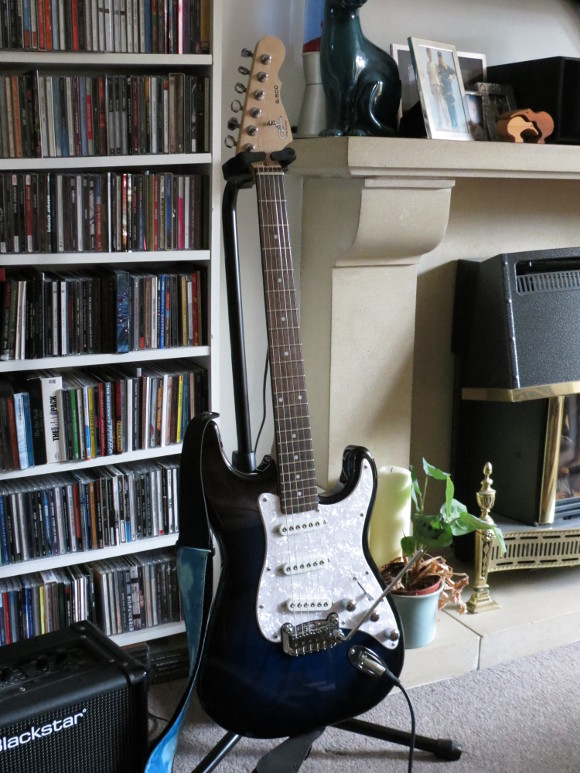
Once again, this was a second-hand purchase from the fine folks at Intersound Guitars. As you can see, I seem to have overcome my resistance to guitars with rosewood fingerboards; in fact, this guitar has rapidly become a favourite. And with a 22-fret neck, it has one more fret than your average Stratocaster. Trust me: it makes a difference. The S-500 was introduced by G&L Guitars back in 1982 and I tend to think of it as the Strat mark II. Leo Fender (the "L" in G&L) introduced a number of improvements to his original design that include a much more robust tremelo system and some extremely beefy pickups. Rather than the Strat's volume and bridge and neck pickup tone controls or the Jackson's no-messing volume and tone, the pots are for volume, treble rolloff and bass rolloff and the centre pot can pulled out to enable two additional pickup selections: neck and bridge together, or all three. Plugged in to my Keeley Dark Side pedal, it's almost impossible to resist playing a few bars of Money or Shine On You Crazy Diamond with it and I will happily admit to a tendency to get rather Gilmourish when I start playing it, as you can hear here:
Exploring the difference in the range of potential tones you can get out of it as a result is going to keep me occupied for quite a while, I suspect.
It's also the prettiest guitar I own, I reckon.
The guitar that took my collection into double figures also has a rosewood fingerboard, but it's a very different beast to the S-500. It's pretty much built for metal from the ground up: a second-hand Ibanez RG770 from the very early 90s.
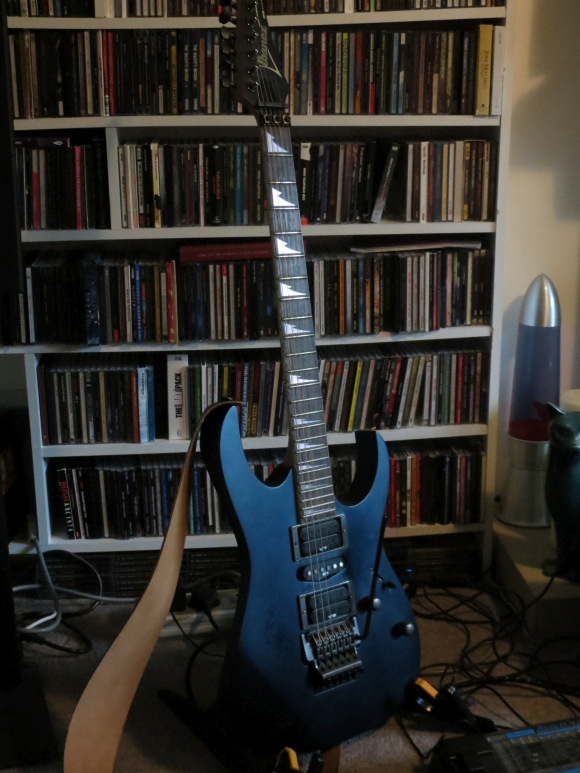
The neck profile and action on it are extraordinary, and the Floyd Rose licensed Edge tremelo system is ridiculous. It has a 24-fret neck, which has been my preferred arrangement ever since I bought the RG9-BK. This is a brash, shouty and very satisfying guitar to play. Through a distortion pedal, it's a cinch to get distinctly Satriani-like tones with it, and I do so on a regular basis.
But this is the guitar that made me take my playing to the next level...
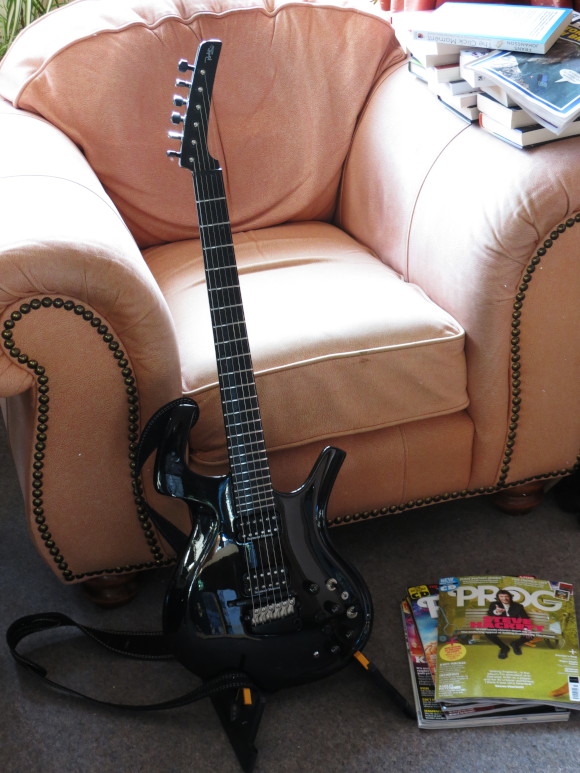
I waited to bring this guitar home with me for over a year, and it's pretty much my Holy Grail of guitars. It's a 2008 model Parker Fly Mojo MIDI. The three other guitar players I know of who play Parkers are Adrian Belew, Vernon Reid, and Gederic Byar, so I feel like I've gained entry to a very exclusive club by getting one. And that is great motivation for me to work at improving my chops.
The 24-fret neck is even more insane than the Ibanez and it's covered with carbon fibre. The body is sculpted from mahogany with carbon fibre bonded over the top and it weighs next to nothing, but the lack of mass doesn't mean that the resulting sound is thin; far from it. Like the Godin, it's active, requiring an internal battery to power the pickups—which means I need to keep a replacement pp9 or two lying around in the studio in case it goes flat (when the battery dies, it dies fast), but the resulting sound is absolutely worth it. Apart from the two humbucking pickups in the neck and bridge positions (and there's a coil tap on the tone knob to get single coil tones when I need them), the bridge is also fitted with a piezo pickup. Not only is it a hugely playable guitar when it's plugged in to a normal amplifier, it also has a 13-pin socket to connect to my Roland GR-55 guitar synth and I can blend the output of the mag pickups into the synth down the same cable. There's even a red LED on the body which lights up when the guitar is connected to the GR-55. Like the Godin, the sounds I get when I run parallel signal chains into the mixer are immense; this thing is a monster.
So, what's making the actual sound in that video above? I've flirted with miking my guitar amps over the years, but I've never been satisfied with the results, and anyway, cranking my Marshall stack up to the point where it generates a decent tone (or anything above a half on the volume dial, let alone eleven) would not endear me to my neighbours.
For about 20 years I recorded all of my electric guitar parts with my effects chain DI'd in to the Fostex X-15, but that isn't how old guitar effects chains were meant to be used and if I'm honest with myself, the results sounded absolutely terrible, with a tone that was tinny and thin even before the X-15's worn out record head started mangling it. Eventually, though, technology saved the day. Now, getting a good sound is all about amp and cabinet modelling. I have a couple of Blackstar amps that do this: the ID:15 TVP in the photo of the Jackson above as well as an early model ID:Core Stereo 10. They both have stereo DI outputs, which do a great job of sounding like a huge amp turned up loud in a live room. My Zoom G6 effects unit also does amp and cabinet modelling and has a decent library of different amp models to choose from. The tone that some of them produce is lovely, although they benefit from tweaking: while the G6 is a big improvement on the Zoom G3 I used to use, which would add a horrid whine to some of its amp sims if the power supply I used for it was having a bad day, even on the G6 some patches are still unacceptably noisy. Noise gates can only do so much to clean things up. But with the right models selected, the G6 can deliver an amazing tone DI'd straight in to the mixer, particularly when the input is being overdriven by my cheap-but-highly-effective Digitech Bad Monkey boost pedal.
I still use many of my old pedals, including my trusty Boss CE-2 Chorus and BF-2 Flanger, which I've had for more than forty years. After the latest pedal reshuffle and the addition of a guitar synth I ended up needing a larger mixer, as my potential simultaneous guitar signal sources have now grown to:
- a stereo out from a Zoom G6 via a JamMan Express looper and a Mooer Ocean Machine
- a stereo out from a GR-55 guitar synth
- a stereo out from my Blackstar amp's DI jack
- a mono out from the GR-55's COSM module
- up to four ambient room mics plugged in to the mixer
- a stereo effects loop on the mixer run through an Eventide H90
The amount of cabling leading to various stomp boxes and A/B switches is getting more than a little out of hand and I am now buying those incredibly useful velcro-coated cable ties in packs (and yes, I used the plural intentionally) of 100.
The result of all this spaghetti is a huge sonic palette that ranges from the incredibly subtle to the completely apocalyptic. All the sounds in the video below were achieved just with pedals—the output from the mixer was fed straight into the camera and no amps were involved at all...
With the setup I have now, I can have hour upon hour of guitar-tastic fun, and I do exactly that on a regular basis. It's taken nearly four decades for my guitar journey to reach this point, but it's not over yet. In many ways, it feels like I've barely started.
All these guitar purchases have had a massive effect on my playing. For a start, I've been playing more regularly than at any time since the early 1980s, so I've got calluses on the ends of all the fingers of my left hand once again. Secondly, I know my way around the fretboard better than I've ever done. This happened more out of necessity than anything else; after playing the nine-string, a standard six-string neck now feels tiny and I've had to develop the muscle memory for playing on necks of different widths. All this means that I have rediscovered my love of playing the guitar all over again.
Over the last five years, since I really started taking songwriting seriously I've noticed a dramatic change in my musical abilities. Now I can—just occasionally—sound a little bit like I know what I'm doing.
But I will always find room in my life for another Strat, though...
...which, like many of its companions, I found at Intersound Guitars in Dursley. This is a 2002 20th Anniversary Squier Affinity Strat. Yes, it was manufactured in China, but it plays nicely and the C profile maple neck on it is gorgeous. With a white scratchplate and a rosewood fingerboard, it looks very much like David Gilmour's Black Strat did in the period when he used it on Pink Floyd's albums Dark Side of the Moon, Wish You Were Here, Animals, and his 1978 solo album. And that means that it's exactly what I was looking for in a Strat. I'm delighted with it.
I wasn't planning on getting any more guitars for a few years but 2023 saw me acquiring a very reasonably priced lap steel guitar, an Epiphone Electar, which I immediately tuned to C6 (C G C G A E) or Hawaiian tuning and set about recording some extremely weird prog-rock / filk crossover stuff with it, because I'm me. It's a lot smaller than I expected and the build quality shows its relative cheapness, but it's fun to play nevertheless.
Even though I kept telling myself I wouldn't need to buy any more guitars after buying the lap steel, it was only a matter of time before my resolve (which, let's face it, is shaky at best) collapsed entirely. I didn't even last a year. My buddy Will mentioned on social media that he was thinking about selling his Warr guitar, a rather spiffy Trey Gunn signature model 8-string tuned in Crafty tuning (Bb F C G D A C D from low to high) and after letting him know I was interested in buying it, I turned to Mr Gunn himself for advice—because it's the 21st Century, and we have the Internet, and such things are possible. Trey's advice was very simple: "You need to buy it!"
I couldn't argue with that. As you can see, it's a beast of a thing with a mahogany body and a walnut top and it is ridiculously heavy, even after I fitted it with a three-and-a half-inch wide padded strap; I can understand why Trey plays his sitting down with it lying across his lap these days. The Fishman piezo pickups for the top six strings also talk to my Roland GR-55 guitar synthesizer, and much to my surprise I've found that it tracks better than the Godin or the Parker. The low end has a more refined tone than the Chapman Stick's brutal "thud" (not that there's anything wrong with that, I hasten to add) and the upper registers have a gorgeous bell-like timbre to them. But feed it through a fuzz, and it turns into a roaring monster. The Crafty tuning is not something I have any experience of and I still have almost no idea what I'm doing with it, but I am very much enjoying the process of discovery.
Once you start recording yourself, you start acquiring more than a few bits of gear (you may even manage to convince yourself that it will help you to make better demos). And then you start wishing that you had somewhere where you could leave all your gear permanently set up and ready to use whenever the muse takes hold.
When I bought the house I'm in at the moment, I made sure that I was able to put a room aside for my music stuff—although it also had to serve as my art studio, complete with a full-size drafting board (and you can read more about that side of my pursuits here) as well as an occasional "guest bedroom". The dream, of course, has always been that it would eventually become a "proper" home studio, even if I used to feel rather embarrassed calling it that. The change was a gradual process at first, but it accelerated once I started taking part in songwriting challenges like February Album Writing Month and Fifty/Ninety. At that point, I'd pretty much abandoned the pretense that this was the guest bedroom, because it looked like this...
You can just make out the mattress of the guest bed in that first photo. It was a desk-and-bunk-bed combination that I bought at Argos and every time I stood upright at my DAW after forgetting that I was sitting underneath it, I would cut my head open on the bed frame. Every time that happened, I would mutter to myself that one day I would swap it for a proper desk and give the room over entirely to being a space for making music.
House guests had become a thing of the past for me even before Covid struck. I became quite ill on my 59th birthday and after six months of traipsing around urology and oncology departments in a selection of local hospitals, I was diagnosed with a large stone in my left kidney (a condition I had when a was a small child and believe me, it's extremely unpleasant) a similar-sized cyst in the other one, and to top things off, a nice crop of stones in my gall bladder. And then 2020 arrived. It was a wretched year for a lot of people and I didn't escape its effects. I spent most of the year stuck on my own at home in lockdown, out of work, and waiting for news of what could be done to fix things. I finally got a follow-up consultation in May 2022 at which point I'd managed to stabilise the condition somewhat by drinking plenty of fluids. Given my age, I was advised that surgery wasn't a great idea and when the surgeon described how they proposed to insert a laser into me to burn the stones away, I tended to agree with him. At the moment, then, my situation is bascially "wait and see if it gets any worse."
In the summer, when I can manage to sustain a decent level of physical activity, I'm fine. In the winter, I tend not to move around so much and that does not help things at all. I can keep the pain at a manageable level most of the time, but when things flare up it makes sleep very difficult and that leaves me feeling permanently exhausted. I try not to feel sorry for myself, but I'm not expecting things to improve any time soon. In order to console and distract myself from it all, I have been spending most of my free time making music. Quite honestly I don't know what I would have done without being able to write and record music.
But as I spent an increasing amount of time in the back bedroom, I found myself frequently cursing the less-than-optimal arrangements that I've had in place for the past twenty years or so. I'd often wished that I had a proper production setup, but in the old days I had kept any plans to do something about it comfortably vague and somewhere in the distant future. I could make do with how things were, I told myself. Until, one day in the early days of lockdown, I realised that trying to cope with things as they were was sucking the joy out of the creative process for me. Working under the bed had switched from being cosy to claustrophobic. Given that being able to make music has become my principal source of pleasure, fulfilment, and self-esteem in recent years, it was clear that I needed to do something about this. I finally found myself asking the big question which I'd been avoiding for the last two decades:
"If I don't do this now, when is it ever going to happen?"
So in June 2020 I started the process of turning the room into one that is entirely devoted to making music. I finally bought the professional grade, four-tier keyboard stand for my polysynths that I had been promising myself since the 1980s. It felt so good treating myself to something I'd wanted for so long that for my sixtieth birthday I ordered myself an even more significant, "milestone" present: a bespoke studio desk built from locally sourced, recycled materials by Guy Mitson at Chunky Studio Furniture just down the road in Banwell. Guy is much in demand, and a very busy chap but that meant that the lead time on the order worked out perfectly: when Fifty/Ninety 2020 drew to a close, I dismantled everything in the studio, put the guest bed on Freecycle, and cleared the back room ready for a serious refit. By Christmas 2020, I'd pretty much finished. The back bedroom had been transformed into the HFO studio, complete with a full HD livestreaming rig and video editing faclilities:
I'm delighted with how everything turned out. I smile every time I open the door and walk into the room—which is what you want from your creative space. In fact I'd go so far as to say it's been a life-sustaining purchase. It's certainly been a music-changing adventure; now that they're no longer stuck underneath a mattress that was absorbing most of the sound they put out, my near-field monitors can do what they're supposed to do. As a result, my mixes have (not surprisingly) gained a clarity and balance that they never had before. And the addition of a dedicated MIDI controller keyboard that is just there at my fingertips, ready to use, has given my productivity a huge boost.
As I said just now, Live has radically changed how I record music, although it took me a couple of years to realise how powerful it was. For a while, the way I went about things was way more convoluted than it needed to be. To be honest, my recording process was...
Complicated.
I'd produce a "draft" drum track in Ableton on the computer using EZDrummer. Then I'd render the track as a stereo WAV file and copy it across via USB to the D3200. I'd soon loaded the D3200's hard drive with a selection of simple drum tracks that I put together at different tempos, and that made it a breeze to import one into each new song. With a drum track created, I can keep in time and start writing in a couple of minutes. It's a fast and convenient way to put ideas together without having to fire up the PC at all, let alone getting my DAW running.
I would usually drop the drum track onto tracks 15 and 16 so that I could control everything with the first bank of faders on the D3200. The drums acted as my click track, and the fills would give me a cue as to where the song changed to the next section (on the rare occasions when I was thinking that far in advance when I laid down the drum track, that is; in most cases, I'd just have five or six minutes of the pattern I'd chosen at a fixed tempo.) Next, I'd record everything else with the D3200. This was very easy to do; the D3200 appears to have absolutely no latency.
When each track on the D3200 was done, I'd export them as WAV files so that I could copy them back over USB to the computer, and then import them back into the set in Ableton with the draft drum track. As a result, each track would be perfectly in time with the drums, and therefore far easier to edit. I soon learned that using Ableton's "marker" function to indicate each section of a song was an essential step of production. Want to swap verse 2 for verse 3? Not a problem. Simply use the mouse to select all the tracks in between the markers, cut, and paste. Job done. Cut down the guitar solo to 8 bars rather than 16? Easy to do with just a few clicks of the mouse.
Once I was happy with the song structure, I'd fine-tune the drum track with fills and breaks that better suited the temperament of the song, and I could even swap the drum kit for one of the expansion pack ones retrospectively, if I felt like it. What a mind-blowing capability to have!
When Mel and I collaborated on In Shadows, our James Bond Theme for FAWM back in 2014, the fact that she'd restructured the song when I got her stems back didn't faze me at all. I just cut and pasted the different sections into their new running order and it took about quarter of an hour to get everything sorted. If I'd been working the old way on the D3200, it would have taken me days to do that.
This was all huge fun, but I eventually realised that I was going about things in a much more complicated fashion than I needed to. Why I was bothering with all the palaver of exporting and importing files between the PC and the D3200? Surely I could just record everything on the PC if I just got myself a USB audio interface instead? That way, I wouldn't have to bother with all that shuffling of files to and from the D3200. I could just work entirely "in the box" on my PC. Slowly, the D3200 got edged to the sidelines.
In most cases these days, I use Live from start to finish. It lets me work much faster than I could when I used the D3200 and then imported the tracks into my DAW via USB. It probably shaves at least an hour off the production time of any piece of music I make and as I learn more about how to get the best out of Live, the quicker I get at putting a song together.
The end results have less flubs and mistakes in them, too. Live allows me to edit most errors out of the mix by building a composite or "comp" track from multiple takes, and its punch-in and punch-out functions are so ridiculously simple and well thought out that I discovered I can even replace individual notes on a track absolutely seamlessly.
So, am I happy with my current recording setup? Oh yes, absolutely I am. The increase in both the quality and the quantity of music that I've been releasing on Bandcamp is convincing evidence of that. These days, any improvements I make are more along the lines of giving things a final polish to make them shine, although I suspect my livestreaming habit will continue to expose weaknesses in my setup that will need fixing.
But all of this is done with just one end result in mind: to get better at making music. The satisfaction of hearing quite how dramatically my music has improved in recent years is difficult to beat.
For the first twenty-something years of my recording career I didn't spend very much time creating drum tracks for my songs. Short of going out and buying a drum kit of my own (which was, and still is a complete non-starter), I didn't really have any choice. The first drum machine I got was a second-hand Movement Sequence Memory Rhythm—one of many Boss DR-55 clones that came on to the market in the 1980s—that I bought from a music shop in Bromley. It really wasn't very good. In fact it was so bad I don't think I ever recorded an entire song with it. It now languishes, unresponsive, in a box somewhere at the back of the studio. I moved on to a Yamaha RX21, again bought second-hand; at the time I thought it was a huge improvement on the Movement machine, and I actually used it quite a bit, although when I listened to its samples recently it sounds pretty dreadful by modern standards. Again, this now languishes in its original box in a corner of the studio, the battery that powered its memory storage now flat, and impossible to replace. I hate planned obsolescence.
Reading the manual for the Korg D3200 revealed that it had a quite sophisticated drum machine with several different sets of drum samples built into it. When I tried it out, it sounded much better than the Yamaha drum machine and it turned out to be much easier to program, too. But I never really used it much, because I acquired other gear that had even better tools for creating drum tracks.
When I first started to use n-Track, I rapidly found out that its integrated drum programmer not only sounded cool, it was far easier to create complex and convincing-sounding drum tracks with it than it was on any other drum machine I owned. As a result, when I first used it on tracks, my friends thought that I'd switched to using real drums. As I already said, n-track is ridiculously cheap to register and it provides a solid, useable DAW.
Then I bought the Korg M3 and discovered that its KARMA function did a pretty decent job of providing a drum track (although it has a few timing niggles). Because I could record its drum track simultaneously with the synth lines I was playing, it reduced the amount of time it took to put a demo track together by a significant amount—hours, in most cases. I could get a good enough result with KARMA drums that for most of the time I would just stick with them. In fact, if I wanted to perform an entire song on my own in one go, and sound like I was a whole band, I quickly realised that the Korg would let me do exactly that. After I'd had it six months, I was playing pieces of music like this:
But when I bought my Focusrite Scarlett 2i2 audio interface back in 2014, it came with a trial version of Toontrack's EZDrummer software. I installed it, and liked both the workflow (using it as a VST plugin) and the end results. Once I was using EZDrummer in my DAW to govern the tempo of songs rather than relying on the Korg M3's KARMA software, the M3's timing glitches were no longer a problem, because I abandoned the M3's drums entirely and switched to Toontrack's virtual drummer. As with other pieces of software that I have really responded to, I rapidly upgraded to the full version. I've been using Toontrack products to create my drum tracks ever since.
The thing with Toontrack's software is, it's expandable. I've bought a very large number of the EZX expansion packs to expand the sonic capabilities of my rhythm section over the years. They provide a bewildering array of different sounding rhythm tracks and I quickly became hooked on getting new sounds. When EZDrummer 2 was announced in 2014, I ordered the upgrade immediately and I'd downloaded it and started putting it to use on the day it was released. Then in 2017 I splashed out and bought myself a copy of Superior Drummer 3, EZDrummer's big brother. It really takes drum software to the next level. The level of tweaking and manipulation that's possible is awe-inspiring and I'm still learning to get the best out of it, but I have already heard a step change (yes, another one) in the results I'm getting in my songs.
Toontrack released EZDrummer 3 on May 3rd 2022 and I bought that as well. The pre-release price for upgrading from version 2 was a bargain, and when I found out the size of the selection of drum MIDI grooves and new drum kit samples that were recorded in three rooms with wildly different acoustics, I couldn't resist.
A final (yeah, right) software purchase that has resulted in a marked improvement in the quality of my music recently has been iZotope's suite of mastering software tools, including Neutron and Ozone. Since I started to use iZotope's stuff, my mixes don't sound as muddy as they used to do and I'm learning how to keep different instruments separate in the mix. iZotope's Tonal Balance Control 2 has also had a revelatory impact on the end results by showing me when I'm overdoing things at particular frequencies—and when I'm not doing enough. As a result of all this, I'm getting much closer to the sounds that I heard in my imagination before I start recording.
I mentioned doing the Berklee audio production MOOC back in 2015, but it's only been in the last year or so that the lessons I learned back then seem to have started to come together. I've begun to really listen to what I'm doing in a way that I've never done before. Rather than just throwing Ableton's mastering presets at a track, I've begun to experiment with different eq and compression settings, learning what they do and what they sound like when they're applied, and finding out which ones work for the sort of music I make, and which ones don't. iZotope's suite has lots of new modules and functionality to play with, and as I started to use them with songs I recorded for FAWM and 50/90 in 2018, I was stunned by just how radically they could alter the character of an instrument, or the character of the track as a whole. Now, the mixing and mastering stage has become as important a part of my compositional process as playing the music.
In particular, I've started paying far more attention to transients, particularly on drum and synth tracks. Using iZotope's plugins to control or emphasise the initial, high-amplitude sounds at the beginning of a synth waveform or a drum hit can change a mix from a gooey wash of indistinct sound into a powerful, clear piece of music.
I know that this is a subject where I have barely scratched the surface. I have so, so much still to learn about the process of mastering, but at least it no longer seems quite the arcane and mystical art that it used to be.
If I'm honest, I've barely scratched the surface of any aspect of making music. Even after more than forty years of doing it, I still feel like I'm just a beginner. And so my musical adventures continue; I hope you'll be able to join me for some of them.
Guitars:
Parker Fly Mojo MIDI
Ibanez RG770
Godin xtSA Special Edition
G&L S-500
Ibanez RG9-BK (nine string)
Squier Custom II Telecaster
Squier 20th Anniversary Affinity Strat
Jackson "Adrian Smith" signature SDX
Fender Telecaster
Customised Aria Pro II "Stagecaster"
Epiphone Electar lap steel
Hohner steel string Spanish guitar
Selmer nylon string acoustic guitar
Basses:
Fender Jazz Bass, Geddy Lee signature model
Jaydee Roadie II Active Supernatural
Customised Ibanez Blazer fretless
Keyboards:
Korg M3 Expanded (with Radias expansion)
Roland JX-3P
Roland Juno 106
Roland Juno 60
Korg Opsix
Korg WaveState MkII
Moog Rogue
ARP Odyssey
Native Instruments Komplete Kontrol S88 Mk2 MIDI controller
The weirder side:
Moog Etherwave Theremin
Chapman Stick (10-string ironwood)
TGSS-8 Warr Guitar
Ableton Push Mk1
Roland GR-55 Guitar Synth
Dubreq Stylophone
Eastar Melodica
Ocarina
Kazoo
And (of course):
Cowbell!!!
Sound reinforcement:
Marshall 100W JCM-800 Super Lead Mk II (1959) head
(with the traditional stack:
two 4x12 320W RMS cabs (1982), all ex Thin Lizzy)
Blackstar ID:15TVP 15W 1x10 combo
Blackstar ID:Core Stereo 10 2x5W combo
H||H VS Musician 100W 2x12 combo
Phil Jones Bass Briefcase Ultimate 150W 2x5 bass combo
Vox Escort
Pignose "Legendary" L-100
Marshall MS-2
Marshall MS-4
Boss Katana Go
Mackie ProFX v2 22-channel mixer (main mix)
Midas DM16 16-channel mixer (synth submix)
Mackie Mix8 compact 8-channel mixer (spare)
Mackie Big Knob Mk1 Studio Controller
Focal Shape 65 near field monitors
KRK KNS 8400 headphones
Effects:
Boss CE2 Chorus
Boss BF2 Flanger
Boss FV-500H Volume Pedal
Digitech Bad Monkey Overdrive
Keeley Dark Side
Flattley NormFuzz
Zoom G6
Mooer Ocean Machine
Digitech JamMan Express XT
Eventide H90
Chase Bliss MOOD Mk 2
TC Helicon Mic Mechanic V1
Yamaha R100 digital reverb processor
Evans Echopet EP-100 analog delay
Virtual Instruments and Synths:
Arturia: V Collection 8
Arturia: Pigments
Blamsoft: VK-1 Viking
Cheeze Machine 2
DEXED
Ichiro Toda: Synth 1
iZotope: IRIS2
Karoryfer: War Tubas
KLANG: assorted instruments for Kontakt
Leslie Sanford: Cobalt
Matt Tytel: Helm
Native Instruments: Komplete 14 Ultimate
Newfangled Audio: Generate
Newfangled Audio: Pendulate
Pianobook: assorted instruments for Kontakt
Plogue: Sforzando
SINE Player
Sonatina Choir
Spitfire Audio: Abbey Road ONE
Spitfire Audio: BBC Symphony Orchestra Professional
Spitfire Audio: Essentials
Spitfire Audio: LABS Virtual Instrument collection
Toontrack: EZDrummer 2, 3
Toontrack: Superior Drummer 3
TAL: Noisemaker
u-he: Tyrell N6
Vember Audio: Surge
Vital Audio: Vital
Waves: Flow Motion
Xfer Audio: Serum
(and lots more that I've probably forgotten)
Recording:
MOTU M4 (4-in, 4-out USB-C audio interface)
Røde NT1-A (everything)
Shure SM7B (everything)
Shure Super 55 (vocals)
Shure SM58 (vocals)
Shure SM57 x2 (amps, instruments)
Reslo RBM (ribbon mic, 1960s vintage)
Various Lavalier mics (livestreaming)
Korg D3200
Tascam DR-40
Zoom Q2n-4K
Zoom Q8
Zoom Q3HD
Canon Legria HD camcorder
Assorted DI boxes
Production:
Ableton: Live 12 Suite
Celemony: Melodyne Studio 5
Exponential Audio: various reverbs
iZotope: lots of plugins
Movie Studio Platinum 15.0
OBS Studio
Valhalla DSP: lots of plugins
It's all very well noodling around in the back room making stuff for your own pleasure; it's something else entirely when you let those results out in public. 2011 was the first year I successfully completed February Album Writing Month, or FAWM, a challenge that involves writing 14 songs in 28 days. Part of the challenge requires you to publish what you've done for other FAWMers to comment on, and once I'd overcome my initial fears it turned out to be great fun. Let's face it—the only way I'm going to get better at songwriting is by actually writing songs and seeing how people react to them.
Here are two examples, both recorded for February Album Writing Month in 2016, the year I went completely nuts and recorded 31 demos in the space of a month—a personal best that stood unopposed until 2021, when I wrote or performed on 32 songs in just 28 days.
I now make music all year round, not just during February. Suitably enthused by the fact that I wrote over twenty songs in February 2013 (I overachieved quite a bit) I signed up for FAWM's big brother 50/90 for the first time—where the idea is to write 50 songs in the 90 days between July the 4th and October the 1st. I managed it on my first attempt, and by the first of October that year I'd written and recorded nearly ninety tracks since the first of January. That's quite a leap from the times not so long ago when I'd have been pushing things if I'd managed to record three songs in twelve months. I've taken part in 50/90 every year since then and every year I've ended up with a tally of at least fifty new songs by the time October arrived.
After the Covid-19 lockdown in 2020 prompted my semi-retirement and made me look for other ways to keep myself occupied, I took the plunge into the world of live streaming. I installed a copy of the free open-source broadcaster software OBS Studio, dug out my Zoom video cameras (both of which can operate as webcams), set myself up with my own channel on Twitch TV and started out on what has turned in to a very rewarding and interesting journey. My goal is to help other people get started recording music at home or improve the results that they're getting if they already have a space for making music at home. In the months since I started, I have learned a tremendous amount about appearing on camera, and I think I've got better with every show I make, even if something still goes wrong every week—a fact that is now immortalised in song with the show's very own theme tune and opening credits sequence.
For the first year I archived everything I streamed to my YouTube channel that I'd set up back in 2011 but which had been largely dormant until now. The resulting change in my analytics prompted YouTube to send me an email that literally included the expression "OMG!" However, YouTube's attitude to creators sucks and the site is rife with IP owners using dodgy algorithms to flag up content that they believe is theirs. That happened to me once too often, even if I did manage to successfully contest the claim. But YouTube also keep changing the goalposts over what you need to be able to monetize your presence there, and after a year of putting in the best part of a day a week carefully editing and curating my content for absolutely zero return, I eventually realised that I was being taken for a ride. So I've stopped using YouTube as a platform for my music.
Since I started live streaming, I've worked hard to make my studio look less of a tip on camera and it's finally become a proper production workspace.
All these changes aren't just for cosmetic reasons. I now have the time and resources to be a lot more serious about the music that I make, and I want to see if I can turn the occasional album sale on Bandcamp into something more lucrative. Over the past five years or so I think I've started to get to a point where my abilities are up to the task; whether the rest of the world will agree with me remains to be seen.
As my live streaming career progresses and I continue to take part in FAWM and 50/90 I will keep posting new music on both sites. I continue to release more polished versions on my Bandcamp page as well. Feedback is always welcome, but please be gentle with me!
In this section I've listed all the releases I've made online in the past decade or so. They're shown here in chronological order with the most recent at the top. I'll try to keep this section as up-to-date as I can, but to stay up to date with my latest work, the best place to look is over on my Bandcamp artist page. I've experimented with a number of different ways of releasing music over the years, including getting my music on streaming platforms like Spotify and Tidal (if you search for Chris Harris, you should see a couple of the album covers below crop up.) After several years of testing, I've come to the conclusion that the platform that works best for me is Bandcamp. I've actually made money from releases there, which is more than I can say for the bigger-name platforms...
My third release in 2024 was made during the dog days between the February Album Writing Month and Fifty/Ninety music challenges I take part in every year. I've become reliant on making music as a way of preserving my sanity in an increasingly mad world. The only rational response I have to our present circumstances is to try to create whatever moments of beauty I can in an attempt to provide some form of solace and respite—mainly for myself, but hopefully for other people too. The album is called Intermediary.
My second release for 2024 was a collection of instrumental tracks laid down during February and March 2024 after I rediscovered the joys of improvising into a loop pedal as a way of breaking out of the compositional habits that I hate falling into. With these pieces, I never really know what's going to happen when I hit record until it's happened. I named the album after the last piece I recorded for this year's February Album Writing Month using the technique, Something To Do While I Think Of Something To Do. This album's size reflects how much I enjoy making this sort of music. It ended up being a bit of a monster; there's nearly an hour and a quarter of music, so it won't fit on a single CD. It's also the first album recorded in part after I upgraded to Ableton Live 12; the upgrade seems to have gone pretty smoothly.
My first release of 2024 was a collection of instrumental tracks which I recorded at home during December 2023 and January 2024. My new Geddy Lee signature Fender Jazz Bass features as prominently in the music as it does on the cover; as it's known colloquially as a a J-bass, the album is called Jaywalking. On it, you'll find me stretching out with a number of different time signatures across twelve instrumental tracks. Listening back to this one, I feel strongly that the impression I got from hearing Lost Ideas, Forgotten Stories that I'd levelled up my playing somehow was no fluke; I hope you'll agree.
At the end of November 2023 I released an album which collects together
my favourites from the sixty pieces of music I wrote and recorded over
the summer for the Fifty/Ninety songwriting challenge. And this album brings
the number of full length albums I've released over the last three years to
twenty-five, which seems like a ridiculous amount of work. I guess that's
because it is a ridiculous amount of work, but this is what can
happen when
(a) you rebuild your home recording studio so that you can work as fast and
efficiently as you possibly can, and
(b) you have become utterly obsessed with making music in as many different
genres as you can think of.
For November 2023's Bandcamp Friday I released an album of instrumental music which I'd written and recorded during the previous month, because I didn't want to stop making music after Fifty/Ninety finished on October 1st. This album is called Lost Ideas, Forgotten Stories. It sees me exploring the possibilities that longer pieces of ambient music can offer, so although there are just eight tracks the running time is more than an hour. The title was inspired by my habit of getting ideas for pieces of music late at night while I was lying in bed, trying to get to sleep. Even though I keep a notebook right next to the bed, there have been many times when it just felt easier to ignore the ideas I was having instead of staying awake long enough to put the light on and jot them down. I always feel guilty when this happens so this is an apology to—and eulogy for—all those compositions which will never be brought to fruition.
I took more time than usual over these songs, and as I listened back to the album as I was preparing it for release, I was surprised by how much of an improvement I could hear in what I was doing. It sounds like I'd levelled up something or other in my music, even if I don't know what it was.
In 2022 I wrote 117 pieces of music between July 4th and October 1st. So many people asked me, "Why?" or "What on Earth were you thinking?" that I decided I ought to write a book about the experience. The book is also intended as an introduction to the delights of setting up a recording studio of your own, so you can do this sort of thing, too. The book and its accompanying album are called A Grand Adventure. The album features twenty tracks—most of them not previously released—that were recorded during those crazy three months. The book is included as both a .pdf file for your computer and as an .epub file for your eBook reader. I hope you'll find it interesting. I put a lot of time and effort into it. It took me the best part of a year to write, so I hope you'll understand why (unusually for me) this is a paid release.
Although the next Bandcamp Friday was still a month away, at the end of June 2023 I released the twenty-second full length album I've recorded since I rebuilt my bedroom studio back at the end of 2020. Somehow I'd managed to preserve a lot of the momentum I had after FAWM, but I slowed the pace down slightly so that I could give each of the new tracks I'd recorded more of a polish than they would have received before a February release. It's called From Script To Screen and like its predecessor it contains exclusively instrumental music. That seems to be where my comfort zone lies, these days.
While I wrote a few songs during FAWM 2023, I wasn't happy with my vocals and as a result I focused heavily on recording instrumental music. Even after FAWM finished, I found myself continuing to write lots of new material. This was a surprise, as I've usually run myself in to the ground by the time March 1st arrives. I released the best of the batch for April's Bandcamp Friday. The album title Continuous Fiction is taken from a quote of Aneurin "Nye" Bevan, a Labour MP who was instrumental in setting up the National Health Service that the Tories are currently destroying. He was referring to the newspapers—because they had just as much of a tendency to frame events to suit their own agenda back in 1960 as they do today. Remember, kids; the Daily Mail loved fascism back in the thirties, and very little has changed since then.
Although I didn't have particularly severe symptoms, it has taken me longer than I expected to recover from getting Covid in October. I took a break from making music in pretty much any shape or form during November and most of December; things in general just seemed too grim to give up creating art altogether so I ended up writing the first and second drafts about the musical adventures I'd had over the summer. In doing so, I realised that for me, creating music is the best way I have of pushing back against the woeful state that the planet is in at the moment. And so I spent January 2023 working on the twentieth full-length album I've recorded since I pulled my bedroom studio apart and gave it a complete refit. The result is an hour's worth of instrumental music (I was too angry about things to trust myself to write worthy lyrics, and any vocals I tried to record would probably have degenerated rapidly into incoherent screaming) that I've called Happy In The Dark. My new Focal monitors were now firmly bedded in and doing a stellar job in making me raise my game as far as mixing and mastering goes; they can be merciless in exposing any shortcomings I would previously have managed to get away with. This is a good thing.
When I upgraded the monitors in my studio (to a pair of Focal Shape 65s, as I mentioned earlier) it felt like I'd gotten a new pair of ears, and I'm not exaggerating here; I was hearing things in my mixes which I'd never noticed before. Some of it was bad, so I found myself going back and fixing it. But they enabled me to get my mixes to work in a way I'd never managed up until now. The results of putting my new-found skill set to work are documented in the album I released for November 2022's Bandcamp Friday. It's called The Future Never Arrives and its fifteen tracks clock in at nine seconds short of an hour. It's all good stuff.
I skipped September 2022's Bandcamp Friday but came roaring back in October with an album that is shamelessly themed around Halloween, the ancient pagan festival of chocolates, plastic skeletons, and unrestrained consumption of Haribo. Every track is inspired either by events which I've read about in my ever-expanding library of esoteric literature, or from my own personal experience. Yes, really! I explain the background to each song in the very extensive sleeve notes, which you get as a downloadable bonus item with your purchase. The album is called Pareidolia. and it's a suitably monster-sized affair with a mind-bending eighteen tracks and the emphasis is very much on the treat rather than the trick.
In August 2022 I released my follow-up to 2018's Fort with another album of songs inspired by some of the colourful characters I read about in copies of the Fortean Times and my ever-growing collection of books about esoteric subjects. Maybe I'm getting more of a curmudgeon as I get older, but the songs cast a somewhat jaundiced eye over the antics of the field's more notorious celebrities, both past and present. I had a blast writing them, and faking the saucer sighting photograph on the cover was even more fun! The album is called Out There. Playing the Theremin was involved.
One of my favourite categories or reading material is popular science, and over the years I've amassed quite a collection of splendid books on the subject. During FAWM in 2022 I wrote a couple of songs that were inspired either by recent additions to my collection or by things I'd read on science websites, so I decided that it was lonng past time I produced an entire album of science songs. I released it in July 2022, and it's called Star Stuff.
Just a week after I released Out Of My Hands (see below) I released another full-length album. This one was full of more traditional rock music and I called it Inbetween. I've given this one the subtitle of "Instrumental rock for trying times" for me, the sort of music that I recorded here is the aural equivalent of comfort food, and we could all do with some of that right now.
I took a month off releasing albums in March 2022 (in the same way that other bands might take a decade off; I work on a different schedule to the major record labels). But at the end of April 2022 I released Out Of My Hands, an experimental album of aleatoric music. The word aleatoric comes from the Latin word for a die and means "depending on the throw of dice" and as far as music goes, that means it was composed using random number generation. I have a number of different applications that can apply randomization to the music I make in a variety of shapes and forms. When I cede control of the composition to them, the result sounds like me, but with the weirdness turned up to eleven. I wondered if it was going to be too weird for people, but the first comment I got back on it when it was released was an email that said "This album is incredible," so I have stopped worrying about it.
Bandcamp reintroduced their Bandcamp Fridays initiative in February 2022, and I had one of the most adventurous albums I've made so far ready and waiting to take advantage of it. I'd set myself the challenge of recording an album where the top number of the time signature for each track (the number of beats in the bar) was greater than it was on the preceding track by at least one. I started with a track in 3/4, which is in waltz time, and ended up writing something in the quite frankly ludicrous time signature of 19/16, so each bar has nineteen semiquavers (sixteenth notes) in it. It took me in all sorts of unexpected directions, which was definitely a very good thing. And it made me work very hard to make it sound slick and polished, which is also a very good thing.
My first release of 2022 was where that more-adventurous-than-usual streak kicked off, as I'd resolved to put my burgeoning collection of sampled world music instruments and rhythms to use. Each track was intended to evoke a sense of place, from the freeways of Los Angeles to caves in Indonesia by way of the Berlin U-Bahn and the swamps of the Bayou. I think I pulled it off in style, because it sounds different while still sounding like me, and I'm really proud of it.
By December 2021 I'd released eleven full-length albums in the space of a year. This might seem a ridiculous pace of work, but it has helped to keep me on a (relatively) even keel during some particularly trying times. Speechless contains over an hour of instrumental music in fifteen varied tracks that feature everything from orchestras to Chapman Stick and there are nods to musical heroes of mine including Jan Hammer and Mike Oldfield. In making this album I rediscovered the joys of playing hardware synths; there's a lot of lead work being played by me on the Korg M3.
For November 2021's Bandcamp Friday I released an album that mixes new material featuring my latest guitar purchase (the black Strat shown in the Guitars section above) with a selection of songs written during the closing stretch of this year's Fifty/Ninety songwriting challenge. It's called Misdirection.
The seventh album I released in 2021 was a collection of deep ambient music and Frippertronics that was written during as I participated in the Fifty/Ninety songwriting challenge. It's called Thrown For A Loop. This time around you get an hour and ten minutes of music in twelve very chilled tracks as I returned to one of my favourite genres.
The sixth full album I released during 2021—which was, once again, a collection of music I wrote and recorded for the Fifty/Ninety songwriting challenge—is called False Starts, Decisive Endings and like its seven most recent predecessors, it's offered as a "name your price" deal. You don't have to pay money for it if you don't want to. This time around you get an hour of music ranging across fifteen very varied tracks as I explored another wide selection of genres. Several tracks have been worked on further since they made their debut for Fifty/Ninety, and one is pretty much a new creation. I hope you'll enjoy listening to them all.
For August's Bandcamp Friday, I compiled my pick of the best music that I produced during July 2021 for Fifty/Ninety. It's called Threat Detector. It contains over an hour of music by me, as I explored a wide selection of genres (because I'm me) and taught myself a bunch of 80s music production techniques (because I'm me). Once again, I made it a "pay what you want" deal, and that includes free. I hope you'll give it a listen or two. Who knows? You may find find something that you like!
I didn't release anything in June 2021, but that wasn't a decision on my part. Long days prevent restful sleep at this time of year, and my continuing health issues really threw me off my game. Recording vocals became a real challenge, as singing began to physically hurt. But that didn't mean I wasn't busy making music; far from it. The album I released the following month contained an hour and a half of material as I explored a very diverse collection of genres in an effort to find a style of music that I could make whilst minimising the pain. As the result was the presentation of a musician in a selection of diverse settings that were largely achieved through special effects and computer wizardry, it's called Green Screen.
After recording over two hours of music (the equivalent of three albums' worth of material) for FAWM over the month of February 2021, I decided to take a month off from my "album a month" production schedule and recharge my batteries. Instead, I spent most of March in a state of twitchy, unfocused agitation. I really like the buzz of working on songs. When I'm not making music, I feel like I'm just wasting the opportunity to do so. So in April, I was back at work writing new material for the online songwriting challenge of Fifty/Ninety: The Prequel, in which I was set the goal of writing fifty songs in the ninety days between April 4th and July 3rd (and yes, the main Fifty/Ninety challenge starts the following day.) By the time Bandcamp Friday arrived once again in May, I'd written another fifteen songs, and they have been added to my ever-growing discography on the album A Decent Harvest.
I ended up creating an hour and 49 seconds of music during April 2021, and as with February's release, I can really hear an improvement in the way I structure songs compared with previous years. The eight-part vocal harmonies were as much of a shock to me as they may be to you, though.
In March 2021 I released an album which collected together the highlights of my songwriting adventures during February Album Writing Month 2021. After listening back to the fifteen tracks here, I think I've made a bigger improvement as a songwriter over the last six months than at any other point in my musical endeavours. For a start, I've begun to go back and rewrite things if I think of something better that I could have done; I have also been much more mindful of cutting out the fat in a track. I've still got some way to go as far as that's concerned, but I've made big strides in the right direction.
The third album in my series of learning projects was the result of me focusing on the collection of pianos I have in my sonic arsenal these days, and it explores some of the concepts and wild thought experiments that are used in cosmology to ponder the ultimate fate of our Universe. The album's called Spontaneous Grand Pianos:
Just before Christmas in 2020 I released a collection of darkly cinematic instrumental music called Decembering.
It was a real journey of exploration, as my approach to composition moved into areas that I'd not previously considered myself capable of entering. It also reassured me that the idea of focusing on a small selection of instruments and really trying to nail down what they were good for was going to pay off handsomely from a creative point of view.
Thanks to being out of work and stuck at home ill, I'd been pretty prolific musically in 2020. I'd got to the point in what I do musically that I started to set myself specific challenges in order to improve areas where I think my skill set is weaker. I also needed to familiarise myself with the deluge of unfamiliar software and new virtual instruments that I acquired during (and after) the studio refit in 2020. I therefore set myself the goal that every month I would record an album with one or two bits of the new gear I've acquired and do a deep dive into what that gear could let me do. As they were intended as learning exercises, I took the decision to put them all on my Bandcamp page as "name your price" deals. The first of these learning project albums was called The Geometry of Sleep (mainly because I have trouble getting a decent night's sleep since I became ill). Each track is named after a feature or phase of sleep, and I tried to evoke that feature in the music. It's still available on Bandcamp as a pay-what-you-want download.
2020 also saw me concluding my experiment of releasing a "proper" album each year on all the popular streaming platforms. Frankly, from a purely financial perspective it's just not worth the effort to continue to do so, but I still get a kick out of being able to say "yes" when people ask me if I'm on Spotify. The final release in my experiment was another album heavily influenced by my prog rock roots, called Oneiric Tulpas.
It's available on Spotify, Apple Music, Tidal and all your other favourite music providers.
Oneiric Tulpas is a companion to 2019's prog album, which was the first release that I made available on all the major streaming platforms. That album was called Beyond. You can still find it on Spotify, Apple Music, Amazon Music, Tidal and most other services as well.
I released revised versions of the demos for the album on Bandcamp as The Progress EP:
One track from the EP ended up on the cover CD for the May Issue (#98) of Prog Magazine, who described my music as "Leonard Cohen meets prog". I'll take that.
Back in January 2019 I set myself the challenge of learning Ableton Live's control functions and discovered how its conditional follow commands can trigger loops in random ways that can't be predicted ahead of time. The results of a weekend's experiments—creating truly aleatoric music—ended up as another five-track EP called Generator. As with my more recent learning project recordings, I released this album as a pay-what-you-want download on Bandcamp:
2018's Bandcamp-only release was a prog-rock concept album revolving around the life of Mr Charles Hoy Fort, the iconoclast who coined the word "teleportation" and who spent his life finding events and tales that, he felt, showed science's unwillingness to accept anything that defied accepted wisdom, such as falls of fish or plagues of frogs. Fort was the central inspiration for my favourite periodical, the Fortean Times (I've been a subscriber for over thirty years). The album is called, simply, Fort.
My 2016 album The Blackest of Dogs contains the most deeply personal and emotional music that I've ever recorded, and I've been doing this sort of thing for close to four decades now. The "Black Dog" of the title is an expression used by people from Dr Samuel Johnson to Sir Winston Churchill to refer to their bouts of depression. It's a disease with which I'm all too familiar.
The songs on the album were recorded between July 2015 and March 2016 as I made my way out of the deepest and longest bout of depression I've ever experienced. Writing and performing them was an attempt to understand what had happened to me, to identify the sorts of things that would make the condition worse and, more importantly, the things I could do to help make things better. It was an intense journey of self discovery. People who have listened to the album are responding really well to it, which is very gratifying.
In complete contrast to the prog rock of my recent albums, back in 2014 I released an album of ambient music. It's intended as the soundtrack to an imaginary journey through The Kuiper Belt, and it's called Beyond Neptune.
Fort took me just under eighteen months to complete. I spent about half that amount of time making Beyond. By the time I got around to recording Oneiric Tulpas it went from conception to release in just three months. By the end of 2020 I was recording and releasing a couple of albums a month—so I'm breaking with the grand rock tradition and getting progressively (aha!) faster at making albums rather than slowing down. I'm such a rebel...
In addition to all the albums and EPs shown above, my catalogue at Bandcamp also contains a number of individual tracks that I've released in the past few years. And if you buy everything I've released, Bandcamp will give you a whopping 35% discount off the deal. I may be rather biased, but I think that's a fantastic bargain. I hope you'll give some of my tracks a listen. They serve as landmarks on a musical journey that still continues, but I'm both surprised by and proud of how far I've already travelled.
I've put a page together with information on some (but by no means all) of the musicians who have had a great effect on me - you'll find it on my groups page.
You might also find my Chapman Stick page interesting.
I also have a Bass page.
And finally, please join me in the studio every Thursday and Sunday evening on Twitch where you can watch me faff about with all my gear, mug shamelessly at the cameras, forget to turn the microphone on, and very occasionally come up with a new piece of music or two that doesn't entirely suck. It's fun!

